WIPLSTIX.COM
828 713 2424

Wiplstix Travel/ Practice Violin
the "infiddel".

WipLstix is a very handy travel violin I invented in 1999. There are now over 850 of them floating around the galaxy, and they are still made solely by me in my shop in the southern Appalachians. The length between its bridge and nut is that of a standard 4/4 violin, but the body has been minimized to maximize portability. WipLstix is a self contained unit, and with a 1/8th size bow and inflatable chinrest (sold separately), they will fit inside a 2" diameter by 24" long watertight, traveling, tube transporter.
As of 03/20/22
Wiplstix are back in production! After a 3 year break to pursue other interests I am excited to be making my "pretty liddle fiddle" again. I hope to have these new Wiplstix ready to send out by early April.
New things:
I am adding an option for higher-quality strings on the Wiplstix. Currently, I am waiting for the cheap strings That are included in the cost of the Wiplstix. They are on a slow boat from China and wont be here until the end of April. The schwanky Larson Danish strings will be here in a week or so. Those will allow me to send it out a month earlier. If you dont order the Larson Strings then your fiddle will be sent out in early May.
For those that want a more traditional set up, I am excited about adding the option of a traditional chinrest/ shoulder rest . An adaptor will replace the tuning pitch pipe at the butt of the instrument and a lightweight chin/ shoulder rest can be screwed in and out. The rests won't fit in the case like the inner tube but they break down and are quite minimal.
There are 3 options of wood:
Black Walnut- is native to the East coast. It is a common, fast growing, "early succession" tree which makes it high on my list for regenerative agriculture. It is the standard workhorse wood that I prefer for wiplstix being very stable, having a warm sound, and rich dark chocolate color.
Figured cherry wood- As I was cleaning up the shop this winter I found one last board of this uniquely figured old growth cherry. This exceptional wood is reserved for fiddles if you like a little eye candy.
Tulip Poplar- is a light cream/ greenish color. It is the least dense wood of the three. The softer the wood in wiplstix the warmer and louder the tones, but you may compromise durability. I made wiplstix guitars a long time ago, and the ones made from the poplar wood had the best tone. Im not sure whether that will translate to the fiddles. The wood is very ordinary looking, and very light of weight if that is important.
If you would like to order a wiplstix this spring, send me an email to [email protected]
and I will let you know when to make a payment Thank you for your interest, and please feel to browse the site especially the wiplworld pages.

"Proves you not only think outside the box,
you don't even know where the box is!"
- A. Miller
Wiplstix customer

How to Travel with Your Violin: Tips for Worry-Free International Travel
In this blog post, we will share some tips on how to travel with your violin safely and without any stress!
Travelling with your violin can be a nerve-wracking experience, especially if it's your first time. You worry about whether or not your instrument will make it to the destination in one piece, and you fret over how you're going to get it through airport security.
Preparing your instrument for transit
Before packing your violin for travel, you will need to take a few precautions to make sure it is ready for the journey. The first thing you need to do is loosen the strings. This will help to prevent them from becoming too tight during transit and will help to keep the instrument in good condition. Finally, you should wrap your violin in a soft cloth or case to protect it from bumps and scratches.
Carrying your violin on an airplane
When flying with your violin, you will need to take it as a carry-on item. This means that you will need to have a seat for your instrument. You can purchase a ticket for your violin or rent a seat from an airline. If you are renting a seat, be sure to bring along a soft case or gig bag to protect your instrument during the flight.
Going through airport security with your violin
When going through airport security with your violin, you will need to remove it from its case and place it on the X-ray belt. You should also remove any accessories, such as rosin, from your carry-on bag. These items will need to be placed in a separate bin for X-ray screening. Finally, you will need to step through the metal detector with your violin in hand.
What to do if your violin is damaged during transit
If your violin is damaged during transit, you will need to take it to a local luthier to have it repaired. Be sure to keep all receipts and documentation, as you may be able to file an insurance claim.
What to do if your violin is lost or stolen
If your violin is lost or stolen, you will need to contact the airline or transportation company immediately. You should also file a police report and contact your insurance company.
By following these tips, you can be sure that you are prepared for any problems that may occur while traveling with your violin. With a little bit of planning, you can ensure that your trip is worry-free!
About the Author
Pedro Silva is a cellist and one of the co-founders of Myluthier.co. He graduated from the Royal Academy of Music in 2018 with a Master of Arts in cello performance, studying with Guy Johnston. He enjoys an varied freelance career as an orchestral, chamber musician and frequently collaborates with Early Music ensembles and West End productions.

Heritage by MyLuthier
Rare antique instruments, representing both historical significance and unparalleled craftsmanship.

We are thrilled to announce that Bournemouth Symphony Orchestra Leader Amyn Merchant now plays on a Guarneri model Violin by the Spanish luthier Gonzalo Bayolo.

The world of classical music has been graced with many exceptional cellists who have shaped the genre with their unique talents and extraordinary instruments. In this blog post, we will explore the stories of the top 10 cellists and the remarkable instruments that have contributed to their fame and success.

3 of the Finest Viola Makers Working Today. Find Out Who They Are What Sets Their Violas Apart!

Flying with a Violin: Transport Your Musical Instrument Safely
by Editorial Staff Last Updated December 22, 2020
Editorial Staff
Our editorial staff consists of a multitude of talented people consisting of musicians, enthusiasts, and talented researchers and copywriters. Our goal? To help you, our readers, get the information you need in the best way possible.
Consordinis articles are written by musicians who independently research, test, and recommend the best instruments and products. We are reader-supported. When you purchase through links in our articles, we may earn an affiliate commission.
Every musician loves his instrument. There can be nothing more traumatizing for a musician than damaging his precious instrument.
And, if you play the violin and you are going somewhere that requires you to travel by air, it’s only normal that you want to continue creating music with your instrument.
However, a violin is an extremely delicate “music-making-machine” (just as how all the other stringed instruments are).
And, it is a grave risk that you are taking if you are planning to check it in with the very cold environment at the cargo section of the plane.
Also, you can never be sure that the baggage handlers won’t break it.

With this in mind, you’ll have to learn how to keep your instrument safe during transit and avoid any damage.
10 Tips and Tricks to Pack your Violin
It probably isn’t the greatest idea to just grab any box and stick a “fragile” note on it.
Keep in mind that in preparing to pack your most beloved violin, you must be equipped with the knowledge on how to do it:
1. Take a bow and wrap it
I am actually talking about your violin bow . It may be tempting to just let it stay inside the case with your violin, but to ensure added safety to your bow, an extra measure is needed. You have to:
- Get a separate bow case or a small PVC pipe slightly longer than your bow.
- Make sure to loosen the bow hair to prevent it from tightening during the travel period. If the bow hair becomes too tight, it might probably snap.
- Once it is loosened, pad both sides of the bow, or wrap it with packing material to prevent the bow from moving.
- Wrap the packed bow in PVC with bubble wrap .
- Place your PVC pipe or bow case into your violin case (if it fits) or inside your checked-in baggage.
2. Loosen the violin strings
While it is true that your violin case is a good protection , your violin will still be exposed to temperature changes.
Excess tension on the violin string may occur due to decreased humidity and fluctuating weather/temperature conditions.
Loosening the strings prevent the bridge from warping, as they are vulnerable and sensitive to temperature changes.
It can also prevent the strings from snapping because of the effect on the tautness of the string as a result of temperature changes.
To loosen your string:
Turn your tuning pegs to loosen the strings (not too much). You can do it by lowering the string a little or even a whole step lower . From sounding G, D, A, E, your violin string should sound F, C, G, and D.
3. Pack your violin with a hygrometer and a humidifier
What is a hygrometer?
Hygrometers are devices used to measure the moisture content of the atmosphere.
Ideal conditions for violins and other stringed-musical instruments are at 50–55% with relative humidity at 20°C.
Dryness (below 40%) involves greater risk as well as excessive humidity (over 70%).
Most violin hard cases come with a standard humidity gauge, but these hygrometers are usually not very accurate.
If you travel a lot and humidity is a major concern for you, I will recommend for you to buy a good-quality hygrometer or digital gauge.
Humidifiers
Wild swings in humidity and temperature can have an enormous effect on your violin’s performance – and sometimes on its structural integrity, most especially with antique instruments.
Prepping humidifiers and using it during your flight allows a controlled and continuous provision of moisture into your violin. This ensures optimum conditions to your violin.
As we have discussed, violins are vulnerable to the rapid changes in humidity and temperature fluctuations.
4. Turn the tuning pegs parallel to the scroll
Tuning pegs are extremely delicate and are easy to break. To decrease the risk of breaking, turn them parallel to the headstock or the scroll .
If you don’t want to, you can remove them and store them in your case’ inside pocket.
Just remember that by removing your pegs, the bridge gets less support so you can also remove it and keep it.
5. Use bubble wraps (and plenty of paddings!)
If you have bubble wraps or soft pads (or extra socks), you can ensure more protection for your violin.
You can put your paddings around the tuning pegs, under the fingerboard, and around the bridge, as they are your violin’s weak spots .
If space on your case permits, you can even wrap your violin with it. If you don’t like bubble wraps, you can get a small silk cloth or a silk bag to wrap your violin before placing it in the case.

Don’t use shredded paper or smaller packing materials for packing the violin. This stuff can fall through the f-holes of your violin and you’ll have a hard time taking them out.
6. Place the violin in a hard carrying case
First of all, if your violin costs more than $500 , it is best to consider investing on a hard case.
Even though the prices of hard cases are higher than the soft violin cases, hard cases merit the expense.
They guarantee you a safer place for your violin, rosin, mutes, tuners, and other violin accessories.
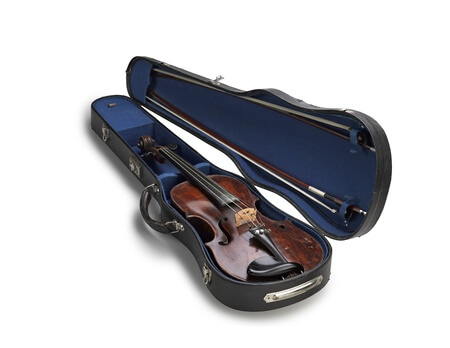
You can’t deny it but there are obvious benefits to having a hard violin case .
So, it is better for you to have one. If you still want to know why, consider these information below:
- Baggage handlers are always in a rush to pack the cargo, and sometimes they don’t heed any notes or “fragile stickers” on the baggage.
- Extreme humid environment and dry weather conditions are your violin’s worst enemy.
- Plane rides can be bumpy due to air turbulence.
Hard cases are like safety capsule that protects your violin while you are traveling.
7. Bring extra set of violin strings
Travelling on a plane is tricky. It poses real risks to your strings. Even if you followed all the safety tips in flying with your violin, strings still break.
It is best for you to bring an extra set of strings . There’s no harm for being sure just in case your string snaps anyway.
8. Purchase an instrument insurance policy
If your instrument costs you a fortune, you can get an insurance policy to cover your travel with your violin.
Most (if not all) airlines don’t pay for theft or damage to your instrument so being insured is essential.
If you have an existing insurance for your violin, be sure it is updated. You can contact your insurance provider about your policy for more details.
Remember, “Sometimes bad things just happen.” Insure your instrument.
9. Depend your violin
Whatever they say and do (as long as you know your rights), resist from staff taking your violin and putting it in the cargo section. Horror stories abound. Sad news exists.
Depend (but don’t argue), and ask mercy from the boarding team – beg and cry if necessary.
Weep heart-wrenching tears and don’t ever let them take your violin away from you.
10. Know the rules
Pablo Picasso once said, “Learn the rules like a pro, so you can break them like an artist.”
Understanding ‘how things work’ is really useful.
I am not advising you to just go ahead and break the rules for the sake of your violin but there could be techniques and tricks to help you get pass through the tight inspection and security checks.
After all, if you think about it, no matter how or when your instrument is born – it is far more valuable than any baggage you can think of (yes, if you are thinking of flying with your violin, I am sure it is pretty valuable).
Rules for Flying with your Violin
1. verify your airlines’ rules for musical instrument.
While airlines are prohibited from asking you special fees for bringing your violin as a carry-on luggage, they can (and of course they will!) charge you with additional fees for exceeding the allowed number, or dimensions, and weight of your carry-ons.
To avoid any delays and problems like not being allowed to bring your violin as a carry-on baggage, be sure to read your airlines’ rules and regulations.
One airline’s rules sometimes differ from another airlines.
While it can be confusing due to these inconsistent policies that violinists face when flying with an instrument, as a passenger, you owe it to yourself to be knowledgeable of what your rights are.
2. Familiarize yourself with the Department of Transportation’s general rule on carriage of musical instruments
If you find it hard to grok each and every airline that you will be flying with, you can familiarize yourself with the guidelines created by the Department of Transportation.
This guideline called “ Federal Aviation Administration (FAA) Modernization and Reform Act of 2012 ” is issued by the DOT.
It requires airlines to follow certain rules in transporting instruments.
This guideline also lists how employees should be trained regarding the carriage of violins, and other musical instruments as checked baggage or as a hand-carry.
The guideline states that passengers must be allowed to carry a small musical instrument like a violin or guitar, and stow it in a suitable baggage compartment, which includes the overhead bin and under the seats in accordance with the Federal’s safety regulations.
You can read more about the FAA’s guideline on carrying musical instruments on a flight, here .
Wherever you’re headed with your violin, enjoy your trip! Keep calm and carry on.

Violin Strings: the ultimate buying guide
Choosing the right violin strings can have a great impact on the sound your violin, the response and the feeling under your finger tips.
Violin String Comparison Chart
This violin string chart will save you a ton of money on strings that aren’t good fit.
Hover over the violin string icons to see the brand and type. Click on the icons to buy them.
What violin strings to buy in 2022?
Bright violin strings have a brilliant, clean and crisp sound. Paired with a bright violin it could become shrill.
Warm violin strings have a deep and dark sound. Paired with a warm violin it could become muddy.
A clean sound is focussed like a laser beam, powerful and with fast response.
Complex sound seems to consist of different colors, rich, but it can also be cloudy.
The strings you choose depend on the sound character of your violin, the playability you’re looking for (higher or lower tension, thicker or thinner strings), the sound you’re looking for and your playing style. It’s a highly personal choice and often a result of lots of experimenting.
Frequently asked questions about violin strings
What difference do violin strings make.
Choosing the right violin strings makes a difference for:
- The sound you make on your violin and complexity in sound colors
- The feeling under your fingertips and whether it’s easy to press the string on the fingerboard
- The response of the violin: fast or slow
Besides that there are different quality levels of violin strings. Some will be a little more expensive, but will last long. Cheap violin strings can snap early, loose their sound or become wobbly in intonation (as if playing in tune on the violin isn’t difficult enough as it is).
What are the best violin strings to buy?
Super quick buying guide.
No time to waste? Here’s a digest of what’s about to come in this article:
D’Addario Prelude are the warmest sounding affordable steel core violin strings out there.
Thomastik Dominants are the standard recommend by a lot of violin teachers (and used by Hilary Hahn).
Pirastro Evah Pirazzi violin strings are most used by professional violinists: soloist as well as orchestra members.
Basic facts about violin strings
The violin has for strings tuned in fifths. From low to high: G D A E. There are also 5 string violins, mostly electric, that have an extra lower C string. In this way you have the tuning of a violin and a viola on one instrument.
When to replace your violin strings?
Don’t wait until your string breaks. Then you’re often too late. Way before that the string already starts to waddle in pitch and loses their initial brilliant sound.
Watch my close up video on how to replace your violin strings right here.
Here’s a guideline to when to change your violin strings:
- Play violin 1 hour a day: replace your violin strings every 6 to 12 months
- Play violin 3 to 4 hours a day: replace your violin strings every 3 to 4 months
- Are you a pro who plays all day? Change your strings every month.
- Are you Ling Ling and do you practice 40 hours a day? Change your strings daily ;).
It all depends on how intensively you play, what the quality level of your violin strings is and how ‘picky’ you are as to the point your strings don’t sound as good anymore
What are violin strings made of?
The core of violin strings is synthetic, steel or gut. The winding is made out of a mix of materials like metal, aluminum, silver and/or gold. More on that below!
How much do violin strings cost?
A decent set of steel core violin strings, for example D’Addario Prelude , costs around $ 17. A good set of synthetic core violin strings, like Fiddlerman Strings , starts at $ 30 for a complete set. Professional level violin strings, like Pirastro Evah Pirazzi , start at $ 90 for a set. Gut core violin strings, like Pirastro Eudoxa , start around $ 100.
What are the most popular violin strings?
D’Addario Prelude and Super-Sensitive Red Label are the most popular affordable violin strings.
Thomastik Dominants are the most popular synthetic core violin strings amongst amateurs as well as professional violinists and soloists. Hilary Hahn plays Dominants.
Pirastro Evah Pirazzi Green are the most popular violin strings amongst professional violinists in orchestras over the world as well as soloists.
D’Addario Helicore is a popular choice amongst top fiddlers.
Do your strings turn grey and wear down quickly because of sweat?
Avoid aluminum strings and choose for silver wound violin strings instead.
How to Choose the Right Violin Strings for You?
The search for the right violin strings that match you, your violin and your bow can be endless. The enormous number of violin string brand and types can leave you overwhelmed and confused. Not to mention broke from buying violin strings that aren’t a good fit.
Some violinists use the same violin strings for decades. Other experiment all the time. Maybe you have bought your first violin and you’re replacing your strings for the first time.
This article will help you understand more about what violin strings are made of, the materials, string tension and tonal and playing qualities that should match you and your violin.
Are violin strings really made out of cat intestines?
The truth about gut core violin strings….
The name catgut is confusing. There are two explanations for the mix up. Catgut is an abbreviation of the word cattle gut. Gut strings are made from sheep or goat intestines, in the past also from horse, mule or donkey intestines. Whatever was available if you were a budding 17th century fiddler. Otherwise catgut could be from the word kitgut or kitstring. Kit meant fiddle, not kitten. Gut core strings are the oldest type of violin strings, but they are certainly not outdated. A lot of violin players, certainly in the historically informed performance movement, play with gut strings. Usually they choose for the unwinded gut strings, like used in the past. Modern gut strings have a winding and are more similar to modern strings.
Pros of gut core violin strings:
- Low tension and different winding method, so they are comfortable under your finger tips
- Complex, often warm, tone that’s typical to gut
- Rich with overtones
Cons of gut core violin strings:
- Slow response
- Need more tuning, especially if there are rapid changes in temperature or humidity
- Not suitable for vegetarians or vegans
Click here to listen to modern gut strings compared to synthetic strings.
Interested to buy gut core violin strings? Here’s my top 4:
Pirastro Chorda are great pure gut strings with a warm sound for baroque instruments.
Pirastro Eudoxa have a beautiful warm sound and also come wrapped for a more modern string experience.
Pirastro Gold has a more neutral sound. The E string is very popular also combined with other strings.
Pirastro Passione are more brilliant gut strings with great tuning stability.
Steel core violin strings
In the beginning of the 20th century it became possible to make steel strings. Steel strings tend to have a quick response and a clear, focused, brilliant tone. Don’t expect a great deal of depth and tonal complexity from steel core violin strings
Pros of steel core violin strings:
- Quick response
- Focused bright tone
- Good tuning stability
- Relatively cheap
- Great for fiddle music (bright sound)
- Great for fractional (children’s) violin sizes as they bring out some more sound and are cheap
Cons of steel core violin strings:
- The sound can be harsh, too bright with little tonal complexity, depth and warmth
- They are often high tension and feel uncomfortable under your finger tips
There are plain steel, plated steel and wrapped/wounded steel core violin strings. Plated means there’s a layer of tin, gold or platinum. A lot of violinists like the sound of a gold plated E string as it has a brilliant and pure sound. Unfortunately gold is soft and wears down relatively quickly. Combined with the high price, you might choose a different material. Wrapping usually happens with chrome steel. This makes the strings a bit warmer sounding and slower in response.
Some great steel core violin strings to buy are:
D’Addario Helicore is used by top fiddlers and has a brighter sound.
Thomastik Infeld Spirocore have a bit lower tension and warmer sound than many steel core strings.
Pirastro Piranito are one of the most affordable Pirastros with a bright sound and long durability. Ideal for school instruments.
Super-Sensitive Red Label are the industry standard of fiddlers and school instruments. They’re very affordable, durable and have a bright sound.
Synthetic core violin strings
40 Years ago Thomastik Dominant violin strings changed the world of violin strings and possibly violin playing in general. The advantages of synthetic strings is that they have the tuning stability and durability of steel strings, but the warm sound and nice finger tip feeling of gut strings. They have a sound with more depth and rich overtones than steel strings. They are the best of both worlds and are the strings that are most used today. However gut string adepts still claim that there’s nothing that beats gut in terms of sound complexity and overtones.
Thomastik Dominants are still the gold standards and used by Hilary Hahn and Anne Sophie Mutter. However, a lot changed in the last decades and there are a lot of synthetic core violin strings to choose from.
Pros of synthetic core violin strings
- Rich sound colors
- Low tension and flexible feeling under the finger tips
- Great durability
- Great tuning stability
Cons of synthetic core violin strings
- More expensive generally than steel core strings
- Gut string players will say they don’t come near the complexity of real gut
Great synthetic core violin strings to buy:
Pirastro Evah Pirazzi are the most popular violin strings amongst soloists and professional orchestra players. They have a bright sound, fast response and long durability.
If you want a more warmer tone, choose Pirastro Evah Pirazzi Golds .
Pirastro Obligato is a great choice if you want a warmer sound.
Pirastro Tonica are a great alternative to Thomastik Dominant violin strings. They sound a bit warmer.
D’Addario Zyex , the choice of Lindsey Stirling, are also a great alternative to Thomastik Dominants, a bit on the brighter side. The strings settle very fast and have a well rounded sound.
Fiddlerman strings are an affordable alternative to Thomastik Dominants: many can’t even hear the difference and they feel just as comfortable.
D’Addario Pro Arte are great strings if you’re looking for affordable strings with a warm tone.
Corelli Crystal are dark and warm sounding strings comparable to Pro Arte. They can be a bit dull, but work great on bright sounding instruments.
Larsen Tzigane have a big warm sound with large resonance and low tension.
Warchal Amber strings are also low tension, have a gut-like warm sound and feel very smooth under your finger tips. The E string is very interesting if you’re looking for a non-whistling E string.

Hi! I'm Zlata
Classical violinist helping you overcome technical struggles and play with feeling by improving your bow technique.
Choose the right string tension
Almost all violin strings are available in different tensions: light, medium and heavy. Lower tension strings are easier to press down to the fingerboard. Also you won’t get calluses or tired fingers as fast.
In general gut strings have a lower tension than synthetic or steel strings. Steel strings tend to have a high tension. Warm sounding synthetic core violin strings have a relatively low tension.
When you search to buy violin strings, start with medium. First search for the brand and type you love. Then experiment with higher or lower
String tension relates to the gauge (thickness) of the strings. Thinner, ‘weich’ or ‘dolce’ strings tend to be lower tensions. They sound brighter with a faster response, but have less volume. A thicker, ‘stark’ or ‘forte’ violin string gives you a darker tone with a slower response.
Gut strings in general are thicker and have a lower tension. The material behaves differently at the same tuning.
What are your favorite violin strings?
Share it in the comments below! I’d love to read what strings you all use.
20 Comments
Hi Zlata, Great to read some more about strings. I like to experiment about with them. My violin is on the warmer side. It came with PI’s but they sounded far to loud for my ears when practising. Vision Solo already improved this. Dominants were sounding extremely boring on it. But my latest strings change was to Charm. And this sounds great! Interesting sound, refined, and a comfortable volume for my ears. Good feeling below the fingers, nice and stable. Think I’ll stick to them for a while.
Thanks for sharing, Elisabeth!
Dominant and Pirastro Tonica are both similar in terms of colours and it’s quite confusing to choose between them. My violin works well with dominant but like you said the tonica is a bit warmer and than dominant… Yeah its true i can tell it from the sound, however the only thing i dont like with tonica is lack of complexity unlike dominant does. While dominant is slightly in a brighter side but more versatile than any other strings on the market… My violin is a slightly warm sounding instrument and has a rich sounding too what can you recommend me?
That all depends on how you want it to sound… warmer, stronger, brighter? Choose the strings in the overview based on that.
i have found the Larson originals and preludes to be a good fit for my violin, a holstein symphony in the strad style with pernambuco fittings which make it a bit more vibrant, although I like the Optima Goldbrokat E string. Would could argue with Heifetz 🙂
Thanks for sharing!
What strings type would you recommend for a violin that can be played as either acoustic or electric? I’m thinking Silver, but I’d like a professional’s opinion first.
I’d go for the type of strings that match that particular violin acoustic best.
Hello Zlata,
A great web site and everything can be found easily.
I am on my third set of Jargar Violin Classic metal core strings but with their Silver Sound G which permits one to really pull out a more rich complex sound. I think that the D string could be more complex but that would mean (perhaps) a silver wrapping just like the Silver Sound G string. The A and E stings are quite powerful and focussed. The violin is an 1886 German Strad copy but provides the almost perfect sound at this moment. Hope this may be of some use to other violinists ?
mám housle pro leváky postavené houslařem. Od počátku bojuji s nosálním zvukem A struny. Dále struna G má příliš hluboký zvuk, až dunivý… Pro strunu E používám Pirastro – No. 1. Pro zbytek sady jsem používala Evah Pirazzi Gold. U A struny jsem kromě Evah Pirazzi Gold vyzkousela Evah Pirazzi, Corelli New crystal, Vision, vision solo, Peter Infeld a další. Nejlépe zněl New crystal, ale stále to není 100% ono. Mohu poprosit o radu, jaká struna by mohla být ta ideální? Děkuji
Maybe try the ‘Russian A’ by Warchal or a similar steel string to make it less nasal.
Because I have been reviewing your site, I went and purchased new vision stings Pirastro Tonica E-salte. Right away and hear the difference from the old strings that came with my eBay violin. I just starting out playing but I could not stand the sound the strings made. The violin shop indicated that my strings were not of good value and suggested, i upgrade. I feel much better with my practice and may now go on and continue to play. I am a beginner and have been playing since Nov 2022. Thank you
Can you add the Jargar Evoke Violin Strings to this chart?
I might in the next update. Where do you feel they’d go as I don’t have personal experience with these strings?
Hi, Zlata. I always enjoy reading and watching your violin presentations. I just put a set of Dominant Pros — which Thomastik just started making recently, I believe — on my 2011 mid-level Heinrich Gill instrument. The clearness and richness of the sound “wowed” me. I’m hopeful the strings retain their characteristics for at least six months or so. By the way, would you tell me the name of the piece you play in the video comparing gut and synthetic strings? Would the sheet music for it be readily available? Thanks!
Glad you found good strings. The piece is the violin concerto by Bruch.
would Dominant strings go with a steinbach 4/4?
Dominants go with practically every instrument.
Submit a Comment Cancel reply
Your email address will not be published. Required fields are marked *
Submit Comment
NEW: Join my FREE 5 day Paganini violin technique challenge
- 4 common vibrato mistakes and how to avoid them
- 4 steps to learning a beautiful vibrato on the violin
FREE 5 day challenge
Paganini violin technique
shortcut to solid intonation
Get started coming Monday:
Sign up for the FREE 5 Day Paganini Challenge

A Musician’s Tips for Traveling with Your Violin

Traveling any distance with your violin could lead to damage if your instrument isn’t properly packed and cared for along the way. So should you leave it behind? No way!
Whether you’re traveling over the hills and through the woods to grandmother’s house or just around the corner for a gathering with old friends, you can use these tips to make sure your violin and bow arrive at your destination undamaged and ready for a song.
Learn how to travel with your instrument and pack your violin for air or road travel!
How to Travel with a Violin by Air

Check your insurance coverage.
Is your violin covered under your homeowners or renters insurance policy? It might be. Call your insurance company to check coverage and limitations. Surprises and accidents are just as likely on local trips as on international ones! You can also purchase an independent violin insurance policy that covers everything from accidental damage to theft.

Leave your bow at home if it is made with ivory or tortoise shell.
Your bow could be confiscated at the airport if it contains ivory or tortoiseshell, as these are banned materials. If you must travel with a bow featuring ivory or tortoiseshell, apply for a CITES (Convention on International Trade in Endangered Species) certificate. A CITES certificate provides proof to customs that all materials from protected species used in the bow were either legally acquired or used at a time when the material was not yet protected. A CITES certificate is valid for three years.
On the flip side, a negative certificate or materials declaration from the bow’s manufacturer can serve a similar purpose in proving there are no materials on the bow from a protected species. Contact CodaBow for a materials declaration for any CodaBow violin bow .
What about Pernambuco bows? Traveling with a finished violin bow made from pernambuco wood is alright, reports the American Federation of Musicians . “You do not need documentation to travel with bows containing pernambuco wood as long as these instruments do not also contain ivory or other endangered species material.” The Federation recommends bookmarking or printing this letter from the U.S. government in case your TSA agent or airport official is unaware of this allowance for pernambuco wood bows.
Plan for extra security screening.
Allow time in your travel schedule for extra security screening. Assume that your violin case will be opened and inspected by a TSA agent (and that the agent may need to learn how to handle a violin and bow properly).
“Musical instruments transported as carry-on require a physical inspection at the security checkpoint. Inform the TSA officer if your instrument requires special care and handling,” reports TSA .
Invest in a sturdy violin case.
Avoid traveling with a soft-cover violin case that can’t bear much weight. You need a protective, durable, and weather-resistant case. Once you put your violin in an overhead bin, another airplane passenger could sling their suitcase into your instrument or place a heavy bag on top of it.
Check out these top violin cases for traveling from Great Violin Cases. No matter how sturdy your case is, you can also add padding to limit jostling. Just put a little bubble warp around the neck, bridge, fingerboard, tailpiece, and between the sides of the violin!
Loosen your violin strings and bow hairs.
Loosen your violin strings and bow hairs to avoid breakage. At flying altitude–even in a pressurized cabin–the tension in your violin strings can increase and damage the instrument’s body. This travel tip applies when traveling with any stringed instrument, not just a violin!
Buy a humidifier.
Airplane cabins are notoriously dry. You’ve felt the effects of it, too! The dry air dehydrates your skin and body, causing dry skin irritation, thirst, and headaches. Your violin can also “dry out,” fall out of tune, and crack.
With the help of a violin humidifier, your instrument can better maintain its integrity and be kept in the 45-55% humidity range. Violin humidifiers range in price from $10-$100. Consider removing the humidifier from the case once you reach your destination, especially if you’re traveling to a humid climate.
Note that changes in humidity aren’t as big of a deal if you have a carbon fiber bow as opposed to a wooden one . Humidity and temperature swings can change the camber of a wood bow, affecting the sound of your playing. A carbon fiber bow, however, is engineered to hold its shape no matter what.
Avoid putting your violin in checked baggage.
Sure, the plane’s baggage hold is pressurized and temperature controlled. One travel website reports that temperatures are held between 45-65℉. But your violin could be thrown about and damaged by baggage handlers along the way, and violins are genuinely happiest in the 60-70℉ temperature range .
Check-in early, and don’t be the last one on the plane.
This tip is crucial for musicians traveling on Southwest, where the seating is first come, first served in designated groups. Airline staff could start checking or moving bags to the cargo hold as overhead compartments fill up. You don’t want your instrument case to find its way down there, and you don’t want to make another passenger check their luggage because you were the last one to board, and now there’s no room for your violin case in an overhead bin. Board as early as possible and pay attention to your nearest overhead compartment.
How to Travel with a Violin by Car

Driving with your violin is much easier than flying! You control almost every aspect of your trip, from temperature to luggage setup.
- Similarly to flying with your violin, loosen the strings and bow hairs before hitting the road to prevent expansion and contraction damage.
- Don’t put your instrument in the trunk where it could get jostled about or crushed by other luggage.
- Go with a durable, weather-resistant case.
- Don’t leave your instrument in the car overnight. Consider taking it with you when leaving the vehicle if the A/C or heat will be off for more than 30 minutes.
- Again, check your insurance coverage!
Is Your Violin Ready to Travel?
With the proper preparation and care, your violin can fly or drive with you to any destination. Carbon fiber violin bows are especially well-suited for the rigors of travel and fluctuating temperature and humidity levels. Upgrade your bow (right alongside your violin case!) to one that’s more durable and reliable than your average violin bow. Request an at-home trial of a carbon fiber bow today, and get ready to pack your bags. CodaBow is there for you with some of the most durable and highest-quality violin bows. Feel free to sign up on our email list for additional information for top orchestral instrument traveling tips.
Fill out the form below to get the download and learn more!
Since pioneering the original carbon fiber bow, CodaBow’s master makers and leading scientists have created award-winning bows for players of every style, station, and aspiration. Generations of players throughout the world trust their performance to CodaBow.
Search In-Home Trial Register Your Bow Contact Us Warranty Information Policy Careers
Stay Connected
© 2024 Codabow

The Violinist.com Guide to Choosing Violin Strings
The three basic types of violin strings:, violin string gauges:, major violin string brands on the market today:, finding the right e string for your instrument..., whistling eing and the kaplan solutions 'whistle free' eing, identifying the strings on your instrument:, buying your violin strings:, for more information:.

Violinist.com is made possible by...

Los Angeles Chamber Orchestra
Metzler Violin Shop
Southwest Strings
Bobelock Cases
Johnson String Instrument/Carriage House Violins
Bay Fine Strings Violin Shop
Jargar Strings
Fiddlerman.com
FiddlerShop
Barenreiter
Nazareth Gevorkian Violins
Laurie's Books
Discover the best of Violinist.com in these collections of editor Laurie Niles' exclusive interviews.

- Mandolin Family Instruments
- Violoncellos da Spalla and Related
- 5-String Violins and Fiddles
- Octave Violins, 5-string Violas and Octave Violas
- Travel and Backpacker Fiddles (and Violas)
- Baroque Instruments (including pochettes)
- Selected Specials, Custom and Vintage
- Gallery: Custom and Discontinued
- Overview and Getting Started
- Examples of Some of Our Custom Work
Additional Information
- D. Rickert Musical Instruments
- Facebook Business Page
- Photo Galleries and Demos
- Latest News
- Shipping & Returns
- RSS Syndication
Account Navigation
Currency - all prices are in aud.

- Call us on 7068960909
- Sign in or Create an account

The NEW International Travel Violin by D. Rickert

Add to Wish List
Click the button below to add the The NEW International Travel Violin by D. Rickert to your wish list.

Product Description
The New International Travel Violin
This new travel violin was designed for violinists and fiddlers wishing to travel without worry with their instruments by air :
- To destinations outside of the U.S., especially Europe
- From one European region to another or from one country to another
- On any small plane (< 50 seats), regardless of destination, within the U.S. or abroad
- Desire an all wood, luthier-built instrument with a 4/4 playable string length,
- Require an instrument with the sonority and timbre close to that of a full-size instrument.
Introduction and Summary
This completely new instrument has a full-size playable string length of 12.75 inches. The cool thing about the International Travel Violin is that it has a body length of approximately 13 inches (normal 4/4 violin has a 14” body) and a cleverly shortened “scroll-less” pegbox. The result is a full-size instrument with a total length of only 20”! This allows the use of a case that is a mere 21” in length. It will fit into many TSA-certified 22” (height) carry-on roller bags! We will be happy to give you recommendations for our favorite carry-on bags.
FREE Test Fitting! : If you wish, we will send you a heavy-duty 4” x 21” craft tube for a test fitting with your carry-on baggage. Let us know if you would like to do this before we start building your instrument.
If you already have, or wish to use a slightly smaller carry-on bag, the International Travel Violin can be made even shorter than 20” on a custom basis, often at no extra charge.
You can, of course, take this instrument as your carry-on item in one of our available cases. In most air travel scenarios, you can also take a bow tube for a full-size bow along as well.
The bottom line is that you can take our International Traveler Violin as a carry-on item on most airlines anywhere in the world without worry, provided that you are not flying on what would be classified as a small plane (< 50 seats). Then, it is a crap-shoot. Also, regional flights throughout Europe and elsewhere often do not allow carry-on baggage of any kind, except for small electronic devices (laptops, tablets, phones, etc.), which always MUST be carried on the plane as a “personal item” (i.e. these items cannot be checked baggage).
If you ever would have to check-in your instrument for the cargo hold, our cases are strong enough to protect it.
See carry-on baggage size and weight limits for a good sampling of airlines all over the world .
Note: For the U.S. airlines on the list (see the above link) and, indeed, any U.S. airline, the carry-on baggage limits do not generally apply to small musical instruments, per U.S. law and associated FAA policies ( FAA Air Transportation Modernization and Safety Improvement Act of 2012, Section 713 ).
Detailed Description
The new International Travel Violin by D. Rickert looks essentially like a slightly shorter version (with a truncated pegbox) of our renowned Ranger C3 Travel Violin. No one has yet challenged our claim that the Ranger C3 is the best sounding travel violin in the world. The International Travel Violin is built on the same principals as the Ranger C3. The two instruments sound virtually the same. Of course, the larger Ranger C3 is somewhat more acoustically powerful—a laws of physics thing.
- Overall length : 20” (50.8 cm)
- Body length: 13” (33.02 cm)
- Nut width: 24 mm
- Width at middle: 3.2” (81.28mm)
- Rib height (at ends): 1.18” (30 mm)
- Rib height (middle): 1.53” (39 mm)
Note: all dimensions have been carefully worked out so that the Ranger C3, with chin rest attached (and, of course, the shoulder rest removed) fits perfectly into our 4” diameter case.
There is also room to spare for your bow and the detachable shoulder rest.
The case can be made to match the length of bow you will be using.
Playing Characteristics and Ergonomics
With its custom center-mounted chin rest and the adjustable shoulder rest in place, holding and playing the International Travel Violin feels pretty much like playing a regular violin. The Velcro-attached adjustable dense foam shoulder rest is easily removable for stowing the instrument in its case. The shoulder rest is actually more comfortable than many rests for regular violins
The International Travel Violin emits almost the same volume as a regular violin. The timbre is amazingly close to a better than average full-size instrument. It is full-bodied and focused. Its sound can best be described as somewhere in between our Neil Gow Pochette and our Deep Body Custom Travel Violin.
Rickert Deep Body Travel Violin (5-string version) Played by Nathan Aldridge ( YouTube )
Darci Jones Playing a Neil Gow Pochette by D. Rickert (YouTube)
- Wittner FineTune internally-geared tuning pegs
- These incredible tuning pegs have a gear system in the buttons. The gearing ratio is a very respectable 8.5:1. A cylinder in the middle of the peg shaft turns in response to turning the button. The pegs are celebrated for their kindness to the peg box. They are held in by friction. Some top violinists have even installed them on priceless antique violins. They look pretty much like ebony.
- Custom-made chin rest
- The chin rest is a “flat Flesch” type of rest, which we carve and re-shape to fit the tail of the International Travel Violin perfectly.
- The default tailpiece is an ebony “Hill” style. If a pickup volume control is installed, the tailpiece is a special poly-carbonate tailpiece by Wittner.
- Adjustable shoulder rest
- The new shoulder rest, attached with industrial strength Velcro, is much simpler to use and is actually more comfortable than any of its predecessors.
- As described above, there are a number of case options, including a plethora of colors and lengths. We have Super Duty and Ultra-lite cases.
- Order the case separately. See the related products at the end of this product listing.
The size of bow you will use depends on how long of a case that you can work with. If you intend to use a 21” case, you will need to use either a take-apart bow, carry your bow(s) in a separate bow tube or use an Incredibow. A ¼ size bow only requires a 24-25” long case. A ½ size bow requires about 27” in case length. A full-size bow requires a 31” long case. Incredibows are actually a very good option. These unique bows look something like Baroque bows. They are very populate among fiddlers; not so much with classical violinists. Incredibows are available in a variety of lengths, including a 19.25" size, which will fit into our short 21" cases. They are also available in various weights and tensions, which is quite helpful in compensating for short length. You should check out Incredibows . We have a lot of experience with them and can help you select the best size, weight and tension for your needs. Feel free to contact us.
Those of you who know us are aware that we really discourage the use of lousy bows. We also believe strongly that a bow for a travel violin should NOT be wooden.
See the Bows section of the Don Rickert Musician Shop .
Optional Built-In Pickup
Many customers opt to have a pickup installed. There are many pickup options. Please contact us if you wish to add a pickup.
Product Videos
At the recent 2013 Hoppin' John Old-time and Bluegrass Fiddlers' Convention in Silk Hope, NC, D. Rickert Musical Instruments had a vendor tent where we had some of our newest instruments. Among them was a five string version of our Deep Body travel violin, also known as a Rickert Travel Viola/Octave Violin. Among those trying out our instruments was a teenager named Nathan Aldridge. We had been looking for someone who could really demonstrate a five string fiddle...we knew immediately that Nathan was our man! He graciously agreed to do a demo on video and his mother kindly gave her permission for us to post the video on YouTube. Nathan went on to win 1st place in Bluegrass Fiddle and 2nd place in Bluegrass Banjo, to boot, later in the day!

Find Similar Products by Tag
Product reviews, write your own review.
We promise to never spam you, and just use your email address to identify you as a valid customer.
This product hasn't received any reviews yet. Be the first to review this product!
Find Similar Products by Category
Related products.

Newsletter signup
Further info, connect with us.
All prices are in USD . © 2024 Don Rickert Musician Shop | Sitemap | Powered by BigCommerce

- Violin Travel Set
- Violin Travel Set Basic
- Viola Tavel Set
- Product list
- User Manuals
- Order form
- About us...

Trinity SuitCase with lid extension
SuitCase is created specially for transporting the Trinity ViolinCase and BowCase through the airport gate, unnoticed.
This is our new, improved, more stylish and compact model.
It became 0,8 kg lighter, smaller on the outside (no side pockets) and less rigid, which makes it easier to place our ViolinCase inside.
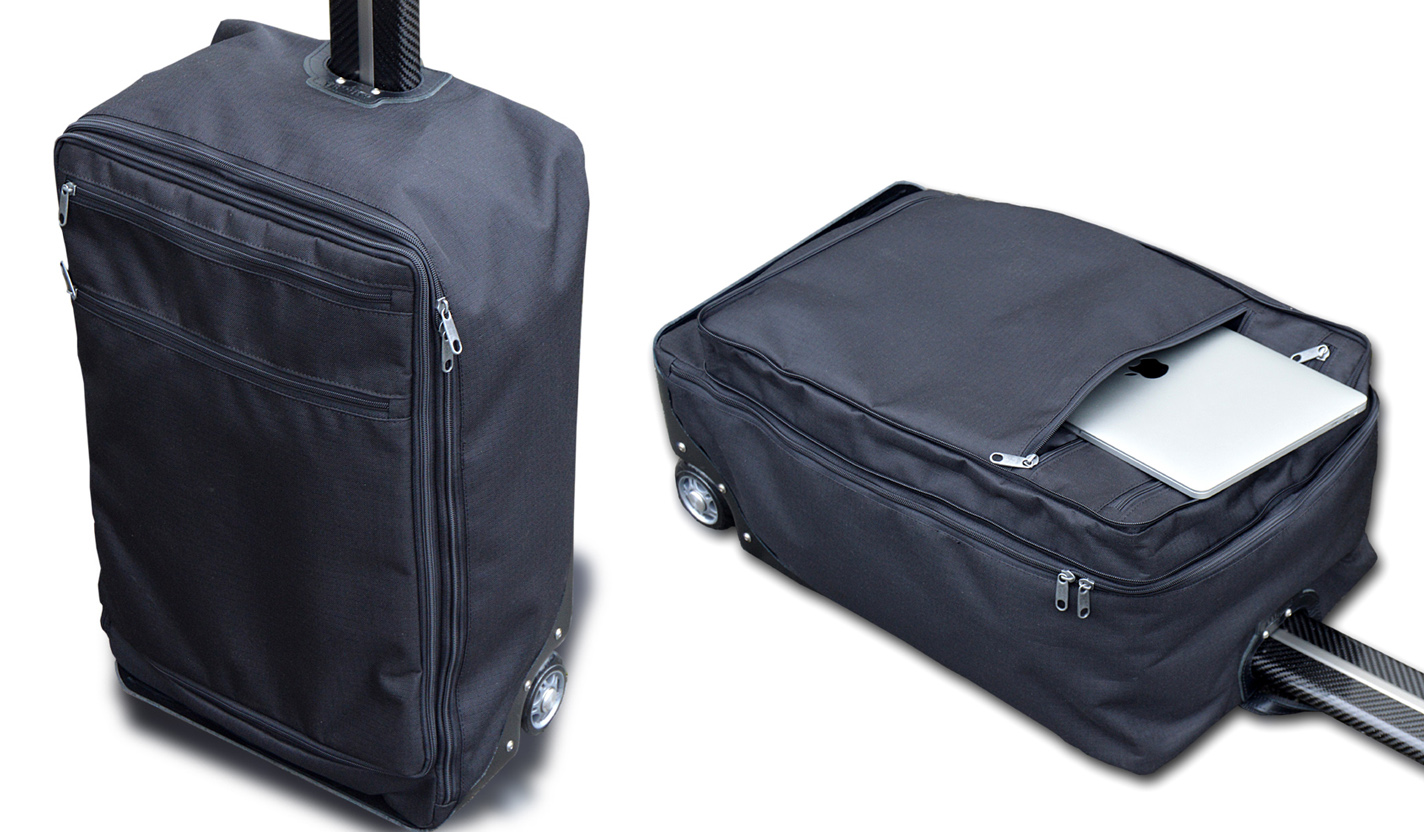
Trinity Garment Bag
The Small and Medium Trinity ViolaCase c an be placed in a Trinity Garment Bag (used normally for carrying a business/concert suits). You can order our version of such a foldable garment bag, which looks like an original from outside, but it’s empty inside, with space enough for your Trinity ViolaCase and many other necessary items.
The measurements of this bag are 57 x 54 x 15 cm (22,4 x 21,25 x 5,9 inches). It has a pocket for the Trinity BowCase too.
Airlines which allow such a bag are: Lufthansa, Austrian, Brussels Airlines, Eurowings, Swiss
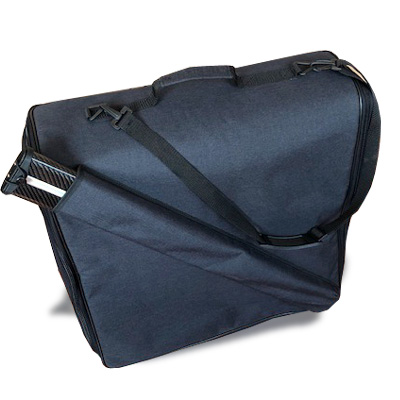
"Li near dimensions " Bag
The Small and Medium Trinity ViolaCase can be placed in a suitcase without wheels, which you can bring onboard of many airlines using the “linear dimensions principle” (length + width + high = 114-118 cm or 44,9-46,5 inch). These are: Delta Airlines, All Nippon Airways, Air Canada, Japan Air Lines, Quantas, Singapore Airlines, Spirit Airlines, Air New Zealand, TAM Airlines, South African Airways.
This bag is slightly bigger than the ”correct" measurements 56x45x15 cm (22x17.7x5.9 inches ), but it should work. It can be used as well for bringing 1 or even 2 Trinity ViolinCases onboard. You have to carry your BowCase separately.

Soft Double Case for Violin&Viola Case
Outside fabric: Nylon
Color: Black
Padding: 2 cm/0.78 inch polyurethane foam
This Soft Case has space for 1 Trinity ViolinCase and 1 Trinity ViolaCase (Small or Medium) + 2 Trinity BowCases in its protective soft covers. You can carry them in one package and use them separately, if convenient.The case is padded, so it adds extra insulation and impact protection to already incredible strong composite sases.
There is the large music score pocket on the top cover.2 detachable shoulder straps and 2 protective covers for Trinity BowCases are included.

Photo Gallery

- Musical Instruments
- Band & Orchestra
- Orchestral Strings
- Acoustic Violins

Image Unavailable

- To view this video download Flash Player
Pyle Full Size Beginner Violin Starter Kit, Violin Starter Package with Travel Case & Bow, Extra Strings, Digital Tuner, Shoulder Rest & Cleaning Cloth for Students, Kids, Adults

About this item
- Item Package Dimension: 32.28L x 12.204W x 5.905H inches
- Item Package Weight - 4.27 Pounds
- Item Package Quantity - 1
- Product Type - STRINGED INSTRUMENTS
Top rated similar items

Product information
Videos for this product.

Click to play video

Awesome violin for beginners
Nelson Hernandez
Affordable Beginner Violin
Customer Review: Great beginner violin kit
Customer Review: Seems like a good quality violin
Violin 4/4 Full Size for Adults, Violin Set for Beginners
Flore's Daily Amazon Shop

Product Description
Features: - High-Quality Piano Code - Wood Grain Visible - Double F Control Uniform Symmetry - Professionally Set Up and Ready to Play - Lightweight and Smooth Finish - 90% Glossy and 10% Matt - Plywood Body with Nice Flames Veneer on Top, Back & Side - Dyed Hardwood Fingerboard & Chin Rest, Carbon Fiber Tailpiece - Ebonized Pegs and Nut - Includes Student Foamed Triangle Case and Student Bow - With Rosin and Bridge - Metal Pull Plate - Durable and Fine Tuning to Ensure Standard Tuning What's in the Box: - Violin - Extra Set of String - Tuner - Shoulder Rest - Cleaning cloth Digital Violin Tuner: - Convenient Clip-on Design - Tuning Range: A0 - C8 (27.5 - 4186 Hz) - Response Time: Technical Specs: - Bow Frog Material: Ebony - Panel Material: Splint - Side Panel Material: Maple - Pull String Material: Metal - Total Violin Length: 23.6'' -inches - Headstock Material: Maple - Fretboard/Fingerboard Material: Maple - String Material: Steel - Product Dimension (L x W x H): 23.6'' x 8.3'' x 3.4'' -inches
From the manufacturer

From the brand
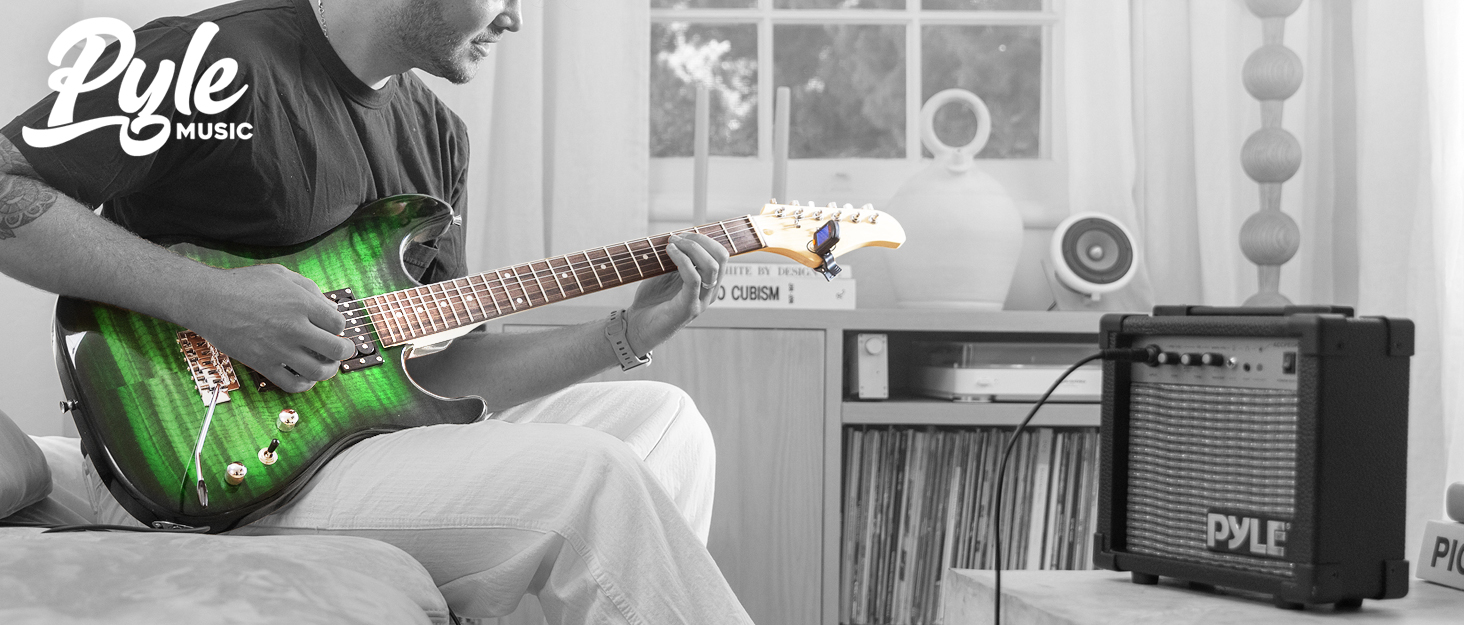
• 3,000+ VIDEO LESSONS • HUNDREDS OF COURSES • 80,000+ SONG TRACKS • VIDEO LESSONS FOR POPULAR SONGS

Visit the Store

Compare with similar items
Looking for specific info, customer reviews.
Customer Reviews, including Product Star Ratings help customers to learn more about the product and decide whether it is the right product for them.
To calculate the overall star rating and percentage breakdown by star, we don’t use a simple average. Instead, our system considers things like how recent a review is and if the reviewer bought the item on Amazon. It also analyzed reviews to verify trustworthiness.
Customers say
Customers like the performance, completeness, appearance and size of the stringed instruments. They mention that it works well, comes with everything they need to start playing and that it looks professional. Some are also satisfied with the sound quality and quality. Opinions are mixed on the strings.
AI-generated from the text of customer reviews
Customers like the quality of the stringed instruments. They say it's a decent product for beginners, and it comes with all the supplies needed to begin learning. Some mention that the quality for price is pretty good.
"...Comes with a blanket, good amount of rosin in a nice case, electric tuner , booklet, rest, replacement strings, cleaning cloth and a long strap for..." Read more
"It’s a great beginners violin as it was cheap , but the bow came broken and I haven’t heard back about a possible replacement...." Read more
"Bought this for my husband and he loves it! Great to learn with !" Read more
"...The music teacher did say that the bow was kinda crappy , so we bought a better bow ($50) made of real horse hair (I believe) and bought better..." Read more
Customers are satisfied with the appearance of the violin. They mention it looks professional, is well-made, and is a great addition to the home decor. Some say that the bow is nice and the product is well presented.
"...Comes with a blanket, good amount of rosin in a nice case , electric tuner, booklet, rest, replacement strings, cleaning cloth and a long strap for..." Read more
"...This violin set was suggested by the violin teacher. Beautiful finish and all the supplies needed to begin learning." Read more
" Beautiful instrument . Accessories work well. Bow arrived broken so waiting on replacement to start playing." Read more
"... All looks in order . I am trying to register the instrument to take advantage of a free metronome." Read more
Customers like that the stringed instruments come with everything they need to get started playing. They also appreciate the good accessories and lightweight case. Customers also mention that it's a great kit to buy and that it comes with all the tools they need.
"...It even came with all the tools he needed to get started. My son’s music teachers actually told him after his first day he had a great violin!!..." Read more
"...I really like how it's a complete set with a nice lightweight case, shoulder rest, tuner, cleaning cloth and rosin...." Read more
"Great instrument for our child. Everything you want is included and works great. Kids and parents all impressed." Read more
"Ordered this for a young family member and many items were missing from the order . No digital tuner. No extra set of strings. No picks...." Read more
Customers like the sound quality of the stringed instruments. They mention that it has a great sound, the resonance is remarkable, and it makes beautiful music.
"...The resonance is remarkable and the smell immediately brought back childhood orchestra memories and ones of my grandfather playing his fiddle when I..." Read more
"...it made beautiful music . It even came with all the tools he needed to get started...." Read more
"...The sound of the instrument itself is OK - acceptable for beginners - but you get what you pay for...." Read more
"...i mean it sounds like a violin to my untrained ears, the sound may not be deep or rich , or whatever other adjective violin players use, but hey!..." Read more
Customers are satisfied with the size of the stringed instruments. They mention that it is the perfect size and fits very well inside the case.
"Just perfect size for my 10yo children...." Read more
"...travel case is very convenient and the violin plus the other items fits snuggly without any worry of damage while on the go. Perfect for beginners." Read more
"...I had high hopes for this Pyle guitar. The size is right and the overall build is what I'd expect for about $60. The whole package show value...." Read more
" Guitar was just right size for my grandson. I was disappointed in the strapping. There should have been a post on guitar to attach both ends of strap." Read more
Customers like the performance of the violin. They say it works great, plays well, and is a working violin. Some customers also like the different modes of the tuner.
"...OK. For the price, cannot be beat; this is a working violin , i mean it sounds like a violin to my untrained ears, the sound may not be deep or rich,..." Read more
"... Better result than expected !!" Read more
"...it was fine but when I went to give to my student, the fine tuner didn't work at all ! Went back to music store for exchange or refund...." Read more
"So far I really like it. The tuner included works really well , I like the different modes for it...." Read more
Customers find the weight of the stringed instruments to be very light, making it perfect for beginners.
"...I really like how it's a complete set with a nice lightweight case , shoulder rest, tuner, cleaning cloth and rosin...." Read more
"...We bought it for our 8year old son. It’s a beautiful violin, lightweight and love that it brings everything a starter needs...." Read more
"...but the product is well presented, looks beautiful and it is very light , perfect for beginners." Read more
"...Its very lightweight and beautiful and came with multiple items that make it very beginner friendly, such as the rosin, tuner with baterry included,..." Read more
Customers are mixed about the strings. Some mention that the case, tuner, and extra strings are handy. However, some say that the strings are very tough on little fingers, and some of the strings were loose when it arrived.
"...amount of rosin in a nice case, electric tuner, booklet, rest, replacement strings , cleaning cloth and a long strap for the case...." Read more
"Violin is perfect for my 9 yr old child. A The bridge on the violin needs a grip so it does not slide. Overall, price is decent for a beginner...." Read more
"...with everything that comes with this kit including a tuner, extra strings , and a great case!..." Read more
"...•Nice case, tuner, and spare strings . You'll need these if you pop the E string immediately like I did :)Neutral:..." Read more
Reviews with images

- Sort reviews by Top reviews Most recent Top reviews
Top reviews from the United States
There was a problem filtering reviews right now. please try again later..
Top reviews from other countries

- Amazon Newsletter
- About Amazon
- Accessibility
- Sustainability
- Press Center
- Investor Relations
- Amazon Devices
- Amazon Science
- Sell on Amazon
- Sell apps on Amazon
- Supply to Amazon
- Protect & Build Your Brand
- Become an Affiliate
- Become a Delivery Driver
- Start a Package Delivery Business
- Advertise Your Products
- Self-Publish with Us
- Become an Amazon Hub Partner
- › See More Ways to Make Money
- Amazon Visa
- Amazon Store Card
- Amazon Secured Card
- Amazon Business Card
- Shop with Points
- Credit Card Marketplace
- Reload Your Balance
- Amazon Currency Converter
- Your Account
- Your Orders
- Shipping Rates & Policies
- Amazon Prime
- Returns & Replacements
- Manage Your Content and Devices
- Recalls and Product Safety Alerts
- Conditions of Use
- Privacy Notice
- Consumer Health Data Privacy Disclosure
- Your Ads Privacy Choices

- Fiddle Players
- Privacy Policy
Violin strings are an often overlooked part of the instrument. You may think they're unimportant or uninteresting, but in reality, choosing the right set of violin strings is a very important decision and can have a huge impact on your playing experience. In this blog post, we will discuss everything you need to know about violin string sets so that you can make an informed choice when it comes time for replacing or adding new strings!
The Essential Guide to Finding the Best Violin String + Reviews
The D'Addario Ascenté would be on your ascent list. The extra high tonal range aids you in fine-tuning the performance. The synthetic core system truly aids in attaining consistent sound accuracy. Thomastik is next on the list of recommendations. If you're a violinist looking to further your abilities, this string is
Considerations When Choosing Violin Strings (Buying Guide)
It's critical to choose the right string for your own playing style. Selecting the appropriate string for your individual style of playing will have a significant impact on how you play. If you take the time to think about your needs, it will be worthwhile to give you the greatest possible musical performance features.
It's critical to calculate your current level of play and evaluate what you might be willing to spend on new strings. We understand how difficult it is to choose where to begin, but we're here to assist you with this major decision. The subsequent part of this essay will concentrate on pointers and characteristics to consider before purchasing a new set of strings.
Types of strings
Gut, steel, and synthetic strings are the three most common types of violin strings. It would be a bad idea to utilize the wrong sort of string on your instrument. Continue reading to learn more about various sorts of violin strings and how to use them in the exact manner you want them to sound like a violin. The many types of violin strings may be found at here [link], and you can determine when it is time to acquire a suitable type.
Synthetic Strings
The strings are designed to keep the E string on its sharp tip for hours of practice. These strings will also assist you in improving your accuracy when playing difficult notes. If you're a seasoned musician, basic strings aren't going to cut it since there are more advanced versions available.
While they may not be quite as durable as real gut strings, these synthetic core strings are excellent for beginners who want to improve their violin skills. The instrument's pitch is also very stable thanks on to the synthetic core material. These strings are ideal for both instructors and pupils since they allow you to progress from beginning to end with ease.
The three basic types of violin strings
The Gutner strings are recognized for their deep richness, as well as complex tones. To boost the weight of the lower strings in the 16th century, they were filled with silver wire. Gut strings require longer to stretch than synthetic materials after which they tend to be more stable; nevertheless, they may react to changes in weather conditions.
String manufacturers have responded by producing synthetic core strings, which are more expensive but have a brighter tone. Synthetic Core Strings have a clear sound with few overtones and are more stable in pitch than gut. They're quite bright-sounding, but they can also be thin.
What core material is used?
Gut core strings were invented in the Old Fashion style and are no longer used. The Austrian firm Thomastik-Infeld created synthetic strings for the market. Steel was identified as a second substance that works well in violin string form. These were regarded for having a quick response time and are also called steel core strings.
The sound they produced was clean and lovely. However, you are not supposed to have the same pleasant, strong overtones that a violin with core strings such as a sheep's gut has. These strings aren't ideal for beginners who require finesse.
A little about string tension of steel core strings
Some individuals consider these terms synonymous. The tension choices were Light, Medium, and Heavy. When determining which gauge and tension to utilize, there are no hard and fast rules. The sound may seem compressed if the tension is higher.
The finest violin strings are those that can fulfill the needs of the players. A string with a higher ranking will have a lower tension than any other kind of string of its kind. And, certainly, those with lesser tension will offer what sounds are anticipated from an instrument. Gut strings have a low pressure, which lowers the tension in the strings.
11 best violin strings reviews in 2021
There are several of these models that outperform the competition due to their craftsmanship, excellent performance, and other features. Here are some great violin strings. The finest Violin Strings for Sale can be found in the United Kingdom and may be purchased on eBay and other websites.
The violin strings that are made specifically for violins tend to be more expensive than other versions available on the market, which makes them perfect matches for beginners who require something of high quality and great value. The acoustic adds warmth along with sturdiness together with its thick core material. They're less likely to break since they have a thicker diameter than ordinary violin strings do too! These three metal cores provide the musician's fingers with an experience like no other when it comes to playing their favorite songs. It is possible to play pretty much every single note you want without having any problems whatsoever; however, these aren't ideal if you would like top-quality sound or even durability throughout your performance time period.
There are many different types of violin strings available on the market to purchase, but only a few of these are ideal for beginners. The steel core is known as being thicker than what you'll find in most violin strings; however, it produces great sound and will last over time with ease
The gut-core string set has high-quality wound metal that offers durability along with reliable performance. These hold up well even when played regularly. Furthermore, they produce an excellent tone which means your audience won't be disappointed by any means! It's fantastic for players who need something durable since these can handle extended periods of playtime without breaking or experiencing other problems like some other items might. They're able to keep their tune thanks to how stable they are too which makes them better than others out there.
These violin strings are available in the traditional styles along with steel-core options too. You'll be able to find what you're searching for, whatever it is that you desire! Purchasing these online will make things much simpler because there's no need to go anywhere else. It's possible for you to get them right at your doorstep; therefore, this allows musicians of all levels and skillsets to play without any worries or concerns whatsoever. Learning how they work isn't hard either since their installation process is quick and simple which makes them perfect choices for beginners who want something easy when it comes time to take care of business!

Pirastro Tonica 4/4 Violin String Set
The Pirastro Tonica strings are made of a unique material that combines fine single filaments and winding materials to produce high-quality violin strings that will not let you down. The vibrant sound of them allows for modulation while also providing more range in terms of voice and song composition.
The strong volume, dependability, and lively sounds are the main characteristics of these strings, which allow you to act without worry. The string is molded to resist high humidity conditions in order to improve durability and protection. The tonal quality isn't as good as that of specialist strings used in professional music players.
D'Addario Prelude 4/4 Scale Medium Tension
The D'Addario Prelude strings feature a solid steel core. The strong steel construction bridges two genres by providing excellent durability while still generating a warm sound. They adore them since they're inexpensive and dependable, yet they manage to create incredibly vibrant sound. A sealed bag will be provided for the storage of the entire set.
Strings are the right fit for children since they are durable while also providing a lovely sound. The E string has a somewhat lower tension than other strings, resulting in an occasionally unclear tone that can be heard. Several clients said that because of this, violinists would have a lesser problem.
Prim 4/4 Violin String Set – Medium Gauge with Ball-end
Polyurethane, silver-plated steel strings are available in medium gauge (0.12 mm). Steel core and chrome steel threading make up medium gauge strings. The sounds that bounce off these strings are lively and warm, with no unpleasant metallic noises detected in any way. Prim violin strings are an excellent value for money; they can be quickly tuned and require little maintenance. Professional musicians all across the world rely on Prim violin strings to amaze their instructors when they play with them.
Optum Violin String Set – 4/4 Medium Tension
The greatest goods available to those who live on a real budget are great for both beginners and families. Each component features color-coded silkwork that makes them simple to find. We like the dyeing silking color, which makes them easy to manage if you take up a lot of strings early on. They're simple to balance since they have plenty of learning capacity and are inexpensive to operate.
Cecilio 4 Packs of Stainless Steel 4/4 – 3/4 Viscose
These steel core round nickel wound strings are for G, C, A, and E pitches. Cecilio is a brand that every violinist can trust, and you will never go wrong if you pick these strings. These strings come in a variety of sizes and are very reasonably priced, making them ideal for students who want to wear out lots of strings while learning. It creates a well-balanced tone and pitch all the way to Mid to Late Classes with durability at an affordable price range. They are available in various sizes.
Pirastro Evah Pirazzi 4/4 Violin A String Medium Aluminum
Evah Pirazzi provides a high level of work-in-progress at reasonable rates. Synthetic string cores might be built to meet the specific demands of soloists performing solos in concerts. The warm tone of aluminum windings and synthetic core is lovely. It's extremely dependable, with the best quality ball-end strings that won't let down even experts. Aluminum wired produces wonderfully warm hues and may reach the crowd in the most exciting way possible.
Pirastro Obligato 4/4 Violin String Set
This string set is perfect for bright violins and generates a very warm and broad sound. It uses an innovative new core composed of modern synthetic multifilament fiber that provides warmth and complex overtones of gut core strings.
The Obligato Strings are ready to go in just minutes, so you may put them up the night before a show and they'll be fine the next day. The high price is one of the major drawbacks with this string set, and while they may be more durable than most alternatives on the market, they will nevertheless perish and need to be replaced. If you're looking for a deeper tone, it wouldn't be the ideal product.
Artisan Violin Strings Premium Quality
The Artisan Salzburgers is a fantastic stringing ensemble for violins. These strings have a warm sound that makes you believe you'll struggle to locate a better deal. They are easy to tune because of their stainless steel core, which provides strength and dependability.
This set's superb sound makes it perfect for all types of music. Its excellent quality extends to the strings, which are constructed of stainless steel and are highly dependable. Tuning your strings is simple, so you won't need to practice much. The sound produced by these strings isn't as deep as that offered by other versions. The variety between 34'and 4/4'violins is possible due to the set's adaptability.
Imelod Violin Strings Universal Full Set
The Acquire Strings Universal Set is an affordable alternative for everyone looking for a set of strings that will work on every musical instrument. It performs equally as well with 4 - 4/4 strings as it does with 1/4 size violins. The E string is composed of stainless steel wire, while the three other three are connected by nickel silver and have steel shafts.
Because of the consistent pitch of the strings, this indicates that they don't require much re-tuning. They are cushioned during transport and individually packed for added protection. It is not advised to utilize it as a primary component on a violin, however, it may be used as a replacement set.
D'Addario J56 4/4M Pro-Arte Nylon violin
The HJ56 string rig is made for the 4/4 violin and has a Ball end. These strings have a great pitch because of their nylon core, which makes them ideal for high-level students as well. After learning most of their identity, players may utilize these strings to give themselves more flexibility in terms of identification.
The Prelude String by D'Addario Strings is less expensive than these strings and should be utilized by all musicians. The nylon core gives excellent tone and is compatible with pupils up to grade 12.
D'Addario Helicore 4/4 Scale Medium Tension
The D'Addario Helicore set comes with a string set that enables you to get a warm tone and an exciting sound. The strings are constructed of high-end materials like Zyex composite, making them durable and resistant to dramatic climate change. Stranded steel strings give you a warm, clear sound quality due on the higher tension.
Many people complained about the short lifespan of the D rope. These medium-tension strings have a play length of 12 inches and are made in the United States by professionals. Many users stated that the durability of the D rope in only a few months has been poor. These strings can be used for both electric violins and acoustic violins since they're versatile.
D'Addario A310 4/4M Violin String Set
The Ascenté D'Addario is a great way to get from zero to hero when it comes to playing the violin. These lessons were created with the needs of every violinist in mind. Superior durability is assured by synthetic core construction, which is great for pitch stability.
Playing the violin benefits from a good bow response and short breaks, which are both useful for advanced players. Some consumers felt that the diameter was insufficient because the A string's thickness was greater than that of other strings and G or D string diameter was smaller.
Pirastro Evah Pirazzi 4/4 Violin String Set
G and C Strings both have an alloy steel core plated in gold. The materials and manufacturing processes are the same for the C and E Strings. Synthetic cores are used by other strings to provide brilliant sounds. These strings allow violinists to perform piano passages with a lot of dynamic range. This set is designed specifically for 4/4 violin players and is inexpensive enough that any competent player can afford it without breaking the bank. Playing on this set will cause it to wear off in less than a year, so regular usage such as several hours each day is necessary.
Full set of high quality strings
The steel core of the string and the nickel ball end ensure long life. This set may be used with any full-size instrument. The steel core is the main feature of this set of strings, which has a sturdy steel core. Even though steel is used to make the strings, they provide a warm sound and have great reactions. The S nylon does not include a rubber cylinder. There were complaints that some S and C strings were more similar than they should be. A complaint about similarities between A and E was received as well (in the review).
Yearly Guide & Report
There are a variety of reasons why you may need to replace your violin's strings. Some people buy new strings for their violins in order to assist a colleague who has been injured in some other way. Other violinists go on a quest for the ideal string system that will enable them to play at their best. Regardless matter why you're buying a new violin, the following information is based on user and expert feedback to help you decide whether or not it's necessary.
Also to consider - FAQ
The strings produced by ZYEX are made of composite materials. The toughness of stringed instruments is improved by using composite materials from ZYEX. Strings from ZYEX will give your violin a warmer, richer tone. Strings from ZYEX
Even so, even if these strings promise excellent outcomes, they may be more expensive than other components in the program. The goal of the Zyex Composers is to create a rich and smooth projected sound on a violin. Even extreme temperature swings or changes in humidity levels can't damage the string materials used in production, assuring string quality no matter how severe climates change or what happens.
There are also many questions that people ask about a violin string guide, so here we have the answers to those frequently asked questions:
How do I know which violin string to use?
The color of a string on the peg end might help you identify which one it is. In addition, if your string is coated with platinum, tin, or gold, viewing the color on the peg end will let you know.
What notes are the 4 strings on a violin?
The violin has four strings, starting with the highest-pitched E and ending with the lowest-pitched G. The strings on a violin are E, A, D, and G in order from top to bottom.
What are violin strings supposed to be tuned to?
On a typical violin, the strings should be tuned (in order from the thickest to the thinnest string) to G, D, A, and E. The tension on these strings can be increased or decreased using the tuning pegs on a violin.
What strings do famous violinists use?
1) Pirastro Evah Pirazzi Gold Violin String Set – Medium Gauge – Gold Wound G - Ball E.
2) Obligato 4/4 Violin String Set - Medium Gauge - with Gold Ball-end E & Silver D.
3) Pirastro Wondertone Gold Label Violin Strings
Is violin concert a pitch?
There are several non-transposing instruments with the exception of flutes, oboes, bassoons, trombones, and baritones. Violin (viola), cello (viola), flute (oboe), bassoon (bassoon), trombone (alto trombone)
What is the G string on a violin?
What is the G String on the Violin and How Does It Work? These particular strings are the thickest of the four strings and lowest in pitch. It's the string closest to the D string on the left side of the neck - adjacent to (or near) the D string. If you play a left-handed violin,
Can you tune A violin by plucking?
Always begin the violin tuning process by plucking the A string and comparing it to an A on a piano or using a violin tuner. If there's only a small difference in pitch between the A string and a concert A, you should utilize the fine tuners.
Why are violins so hard to tune?
Many factors can cause tuning difficulties, including ill-fitting pegs that slip or stick; fine tuners that don't work; and old strings that have gone false. Another issue is the fact that planetary pegs may be installed on your violin, making tuning a lot simpler.
How do I tell what gauge my strings are?
Unless you have a caliper or micrometer to measure your strings' thickness, there is no easy way to figure out the gauge of strings on your guitar. In general, if you play electric guitar, you'll be using extra light or light string set gauges (either 10's or 11's).
How do I remember Eadgbe?
Eat All Day Get Big Easy is a phrase that can be used to describe someone who consumes all day, gets big easily, and has an easy lifestyle. Every Amateur Does Improve Over Time. Eddie Ate Dynamite Goodbye, Eddie!
How much should I pay for violin strings?
Violin strings cost anywhere from $10 to $40, depending on their quality, gauge, and manufacturer. A high-quality set should fall between $15 and $35.
What violin strings does Hilary Hahn play?
The top two are well-known within the industry, but there are plenty of other choices to be made. The wavy Silver Label is an excellent choice for all skaters who prefer a softer feel in their slides. Even if you're not into music, it's worth noting that this deck is available with graphics from various artists in several styles and designs. -> Hilary Hahn: E. Maxim Vengerov: I used Dominants previously but recently switched to a full set of Pirazzi violin strings. Ilya Gringolts: He currently uses Evah Pirazzi.
What are the different types of violin strings?
Gut strings, steel core strings, and synthetic core strings are the three most common types of violin strings. Gut cores are made from sheep intestines that have been wound with a metal (usually copper or silver), giving them their distinctive tonal characteristics and needs for maintenance. GUT CORE: GUT STRINGS ARE WOUND FROM SHEEP INTESTINE AND INCLUDE SOME KIND OF METAL (usually COPPER OR SILVER)
What key is violin in?
The violin score is in C major since it's a simple key to read, write, play, and transpose to. Transcribing the violin part a whole step down (into the key of Bb major) to match the piano is an excellent exercise for learning more about music.
Is violin A concert C instrument?
Although the sound of an "A" is used to define concert pitch, C instruments are instruments that read music at concert pitch. Piano, organ, oboe, violin, guitar, and trombone are all C instruments. A pianist who sees a printed C will play a note that the violinist would accept as a C.
What is it called when you pluck the strings of a violin?
The Italian term for "plucked" is pizzicato, which derives from the word pizzica. Playing pizzicato on a stringed instrument (such as the violin, viola , cello, or double bass) implies making the notes sound by plucking them with your fingers rather than by using a bow.
Which violin string goes on which peg?
On practically every violin, the tuning pegs should be positioned in the same way. Check to see if you're inserting the string into the correct peg: The bottom left E string. The top left D string.
Is it hard to tune A violin?
It's not difficult to learn how to tune your violin, but it does take time to develop your ear. Check the pitch of each string with your chromatic tuner. Make tiny turns using the fine tuners to adjust the pitch with small turns as long as the strings themselves aren't severely out-of-tune (more than one-half tone).
How many notes are on A violin?
The notes of a violin are played using twelve different keys: A, A#, B, C, C#, D, D#, E, F and F#. The lowest note on the violin is a G3 and the highest is an A7. In the first position on each string, there are eight distinct notes that you can play. You may begin by playing the open wire (E).

How To Travel With Your String Instrument

Summer is almost here. The time when many student musicians travel to various venues, camps, and festivals to play their instruments. And with so many exciting prospects to look forward to, it can be easy to overlook mundane concerns like the best way to travel with your string instrument.
Your are probably already aware that the atmosphere has a big impact on the organic materials used to make your violin, viola, cello, or double bass. So when you’re traveling, there are a number of considerations to take into account. You don’t want your instrument damaged in route. Depending on the mode of transportation, there are specific things that you should do to ensure that your string instrument remains safe. Although it may seem daunting at first, keeping your string instrument secure on trips just requires a little preparation.
Traveling In a Vehicle
If you’re traveling by car, protecting your instrument is much easier than traveling by air. Of course, this won’t work if you’re going overseas, but for short trips, vehicles are relatively secure. Since you can control the climate in the cab, tips include:
- Never place your instrument in the trunk. Keep it in the cab.
- Loosen the strings on your string instrument and the bow hairs to help prevent expansion and contraction damage.
- Carry your instrument in a hard case .
- Bring your string instrument inside restaurants and hotels, if the car’s air/heat will be off for more than 30 minutes.
Traveling By Air
Since it’s not always possible to travel in a vehicle, air transportation is common for musicians. However, the risks to instruments increases. In the past, regulations about instrument travel weren’t outlined. However, a few years ago, the Department of Transportation (DOT) established a new ruling that states that airlines are now required to allow small instruments on board as part of carry-on luggage. Follow these tips whether you check your instrument or use the carry-on option:
- Southwest Airlines
- U.S. Airways
- United Airlines
- American Airlines
- Prepare for security checks—Security personnel will most likely check your instrument, so the transportation security administration ( TSA ) recommends that you place small instructions on your instrument case for handling and repacking. Also, make sure that you give yourself plenty of time to go through the process.
- Ready your instrument—loosen the strings and the bow hair to protect against extreme pressure changes.
- Add padding to your case—adding bubble wrap around the neck, bridge, fingerboard, tailpiece, and between the sides of the instrument reduces jostling.
- ID tag—Even if you are carrying on, an ID tag is essential. It should have full name, phone, address, and email (covered of course), somewhere on the instrument case. Also, mark it as “FRAGILE INSTRUMENT.”
- Update your Insurance —This is a great time to double-check your insurance policy, since most airlines will not be responsible for any damages. If you don’t have insurance, you should purchase it before you travel.
- Get there early to ensure that you can place your instrument in the overhead compartment. Once there, it has the right to remain.
- Bring a copy of the DOT ruling and the airline policy with you in case any issues arise, but remember to be polite.
- If you do check your instrument, make sure that you use an additional travel case over your hard shell case, but always confirm airline baggage rules.
Some instruments, like the cello and double bass, are too large for overhead compartments, so you’ll need to check them or purchase an additional seat in the cabin. When you buy an extra ticket, which is the best traveling option for your instrument, make sure that the seat isn’t near the emergency aisle or blocking any exits. Double check seat placement when buying your tickets, either through the airline or a site like Seat Guru. Additional tips include:
- Call the airline before you buy to ensure that you comply with their specific policies. (This also provides proof that you notified them before the flight.)
- The DOT ruling states that the airline cannot charge you an additional fee if you buy a seat for your instrument, as long as all of the safety requirements are met. So, basically, once you by the ticket, they can’t charge you any other carry-on fees.
- If you’re flying international, double check all the airline (even if it’s American based) laws for that country.
For students traveling with their instruments, making sure that accommodations are made to protect your investment just takes a little preparation. If you spend some time making arrangements, you can be sure that your string instrument will arrive at your destination safely and intact.

Share this article

Search StringOvation
Connolly music.
- Resource Center
- Shop our brands
StringOvation
- Latest articles
- Submit a guest post
Subscribe to StringOvation
Connolly family of brands.
- Thomastik-Infeld
- konig & meyer
- Magic Rosin
- THE REALIST
- Connolly Music Company
- 8 Vernon Valley Road, E. Northport, NY 11731
- 800.644.5268
- [email protected]
- M-F 9 am - 5 pm ET
- Copyright 2020 by Connolly Music Company. All rights Reserved
- Privacy Policy
- Terms & Conditions
- create New 'Secondary' Menu
Home Violin Blog Violin Basics Beginner Tips Violin Open Strings – an Easy Guide for a Violin Newbie
Violin Open Strings – an Easy Guide for a Violin Newbie
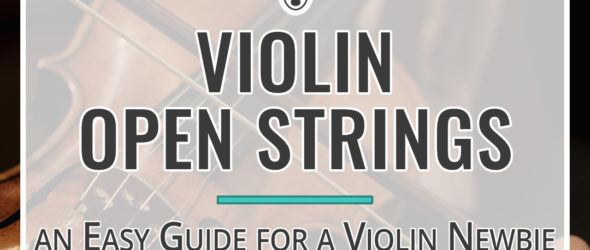
If you’re just getting started with learning to play the violin, you’ll need to know what the violin open strings are. These are the four strings on the instrument. They each have a name and sound a different pitch. Read on to learn everything you need to know about the open strings, and to download free sheet music exercises!
What Are Violin Open Strings?
The violin open strings are the four strings mounted on a violin. From left to right, the violin string order is: G, D, A, E. The G string is thickest, and E is the thinnest string. The term “open” means that no fingers are pressed down on the fingerboard. We play just the string itself.
In fact, all stringed instruments have open strings – these are just the strings of the instrument.
Fun fact: there can be more than 4 strings on a violin. Violins with five strings can be found mostly among electric violins but there are even 7-stringed violins! Have a look at this example .
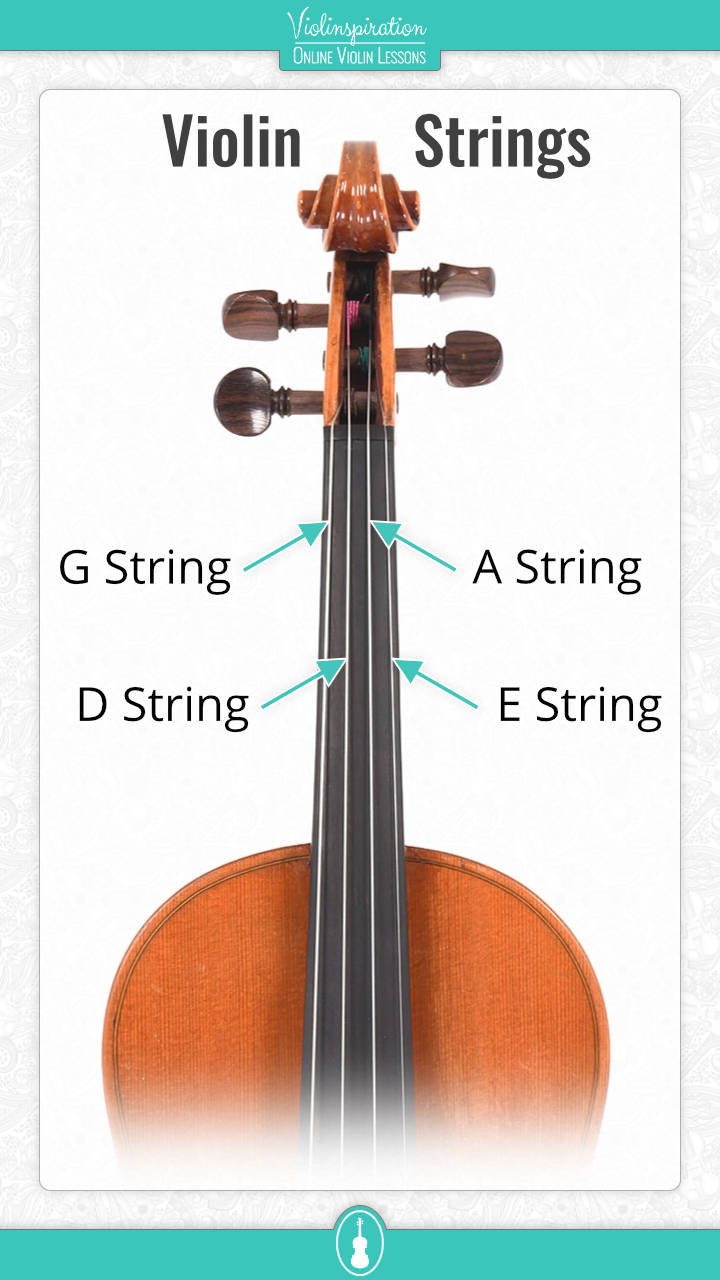
How do You Play an Open String on the Violin?
You probably already played or plucked open strings when tuning your instrument. Open violin strings are played with no fingers down on the fingerboard . Open string notes are usually the easiest to play, for this reason!
To play an open string on the violin, you’ll want to be sure the bow hair is touching the string you’re trying to play and only that string. Your left hand will just help support the neck of the violin. No fingers should be pressed on the fingerboard.
How do You Know if a Note is an Open String?
The open strings look like this on the staff, they’re just these four notes:
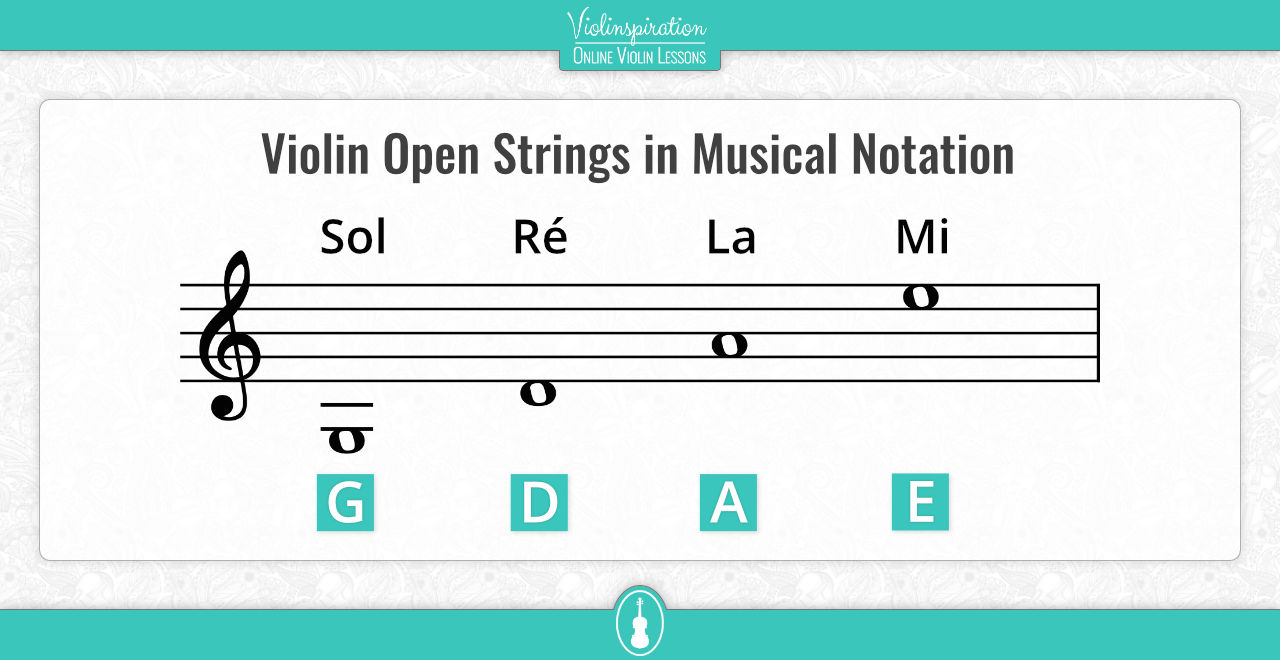
If you see one of these notes in your music, you’ll probably play an open string!
As you progress, you’ll learn that the 4th finger can play the corresponding note as the open string to the right of the one you’re playing on.
When to Play an Open String and When to Use the Fourth Finger on the Violin?
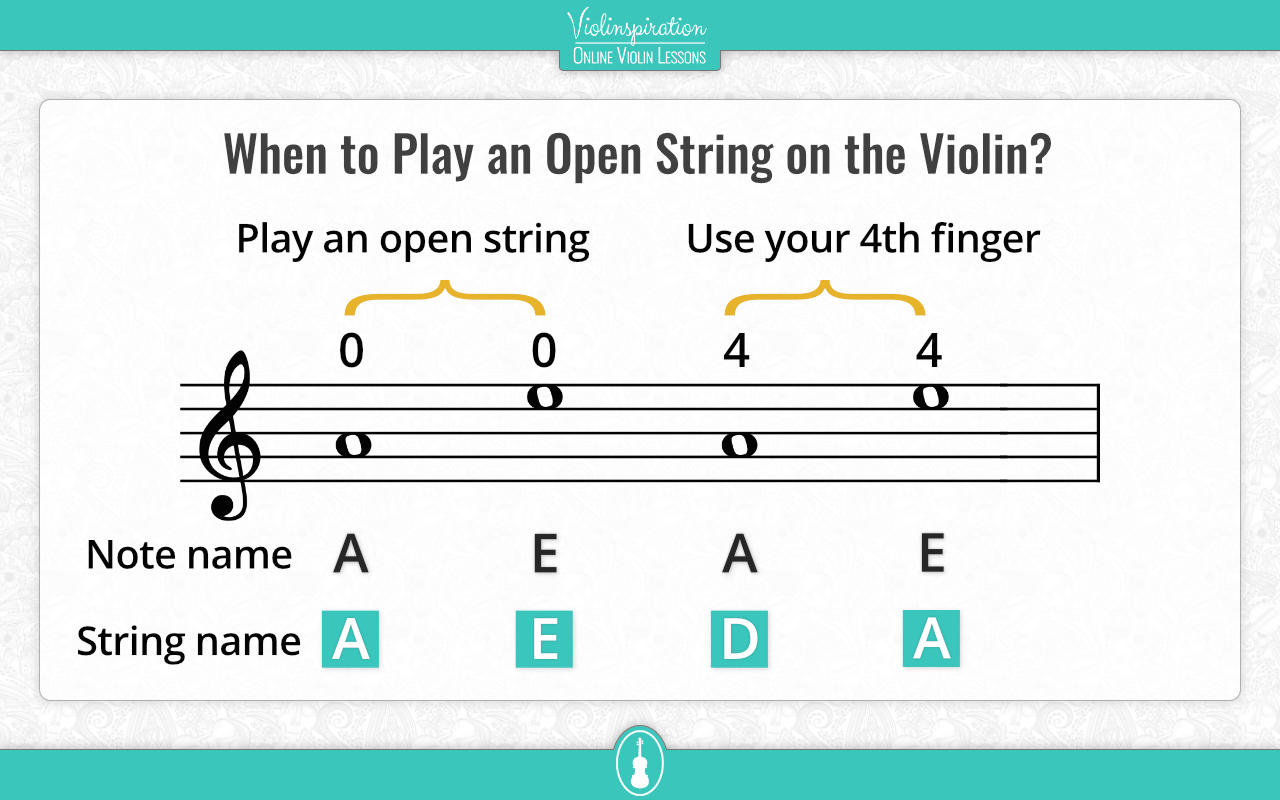
If a note has a “0” (zero) above it, then it should be played on the open string.
If a note has a “4” written above, it shows that you should play with the fourth finger.
But be careful, if a note has a circle above it, then it is a harmonic note ! You will most likely find it in intermediate to advanced repertoire.
How do You Practice Open Strings on the Violin
It’s likely you started out by playing just open strings on your violin. This is a little easier than playing written music with extra notes because your left hand doesn’t need to do any work.
Playing open strings will help you get better at playing just one string at a time, even when you’re playing more difficult songs that include left-hand notes.
Your right arm and elbow will need to be at a different angle for each and every open string. Practicing the open strings will help you learn exactly where your right arm and elbow need to go to play on each string. This helps in your violin music, too: you’ll be less likely to bump strings you shouldn’t be playing!
Violin Warm-up on Open Strings
The following exercise is great for finding the exact arm angle you’ll need for each string. After a bit of violin practice, your brain will automatically associate the correct arm angle for the corresponding strings.
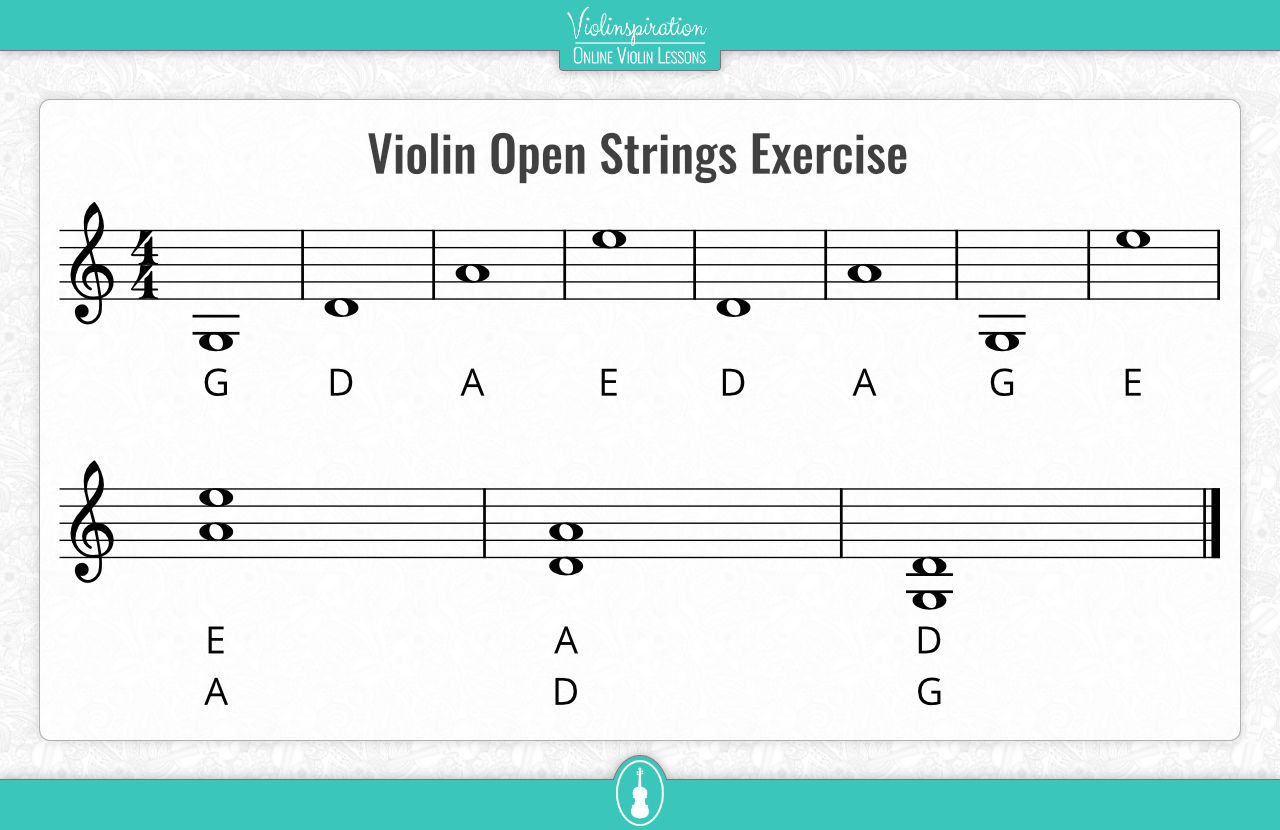
If you decide to join my online school, Julia’s Violin Academy , I highly recommend you doing also the 7 Elbow Levels exercise and for fun, try to play it with the accompaniment.
Develop Your Musicality: Practice With Different Rhythms
Once you’re comfortable with the exercise above, play it again with different rhythms. Switching rhythmically between strings will train your arm to really know exactly how to move to play the corresponding strings at the right time without bumping accidental notes. Your tone quality will improve, and everything will become easier!
You can do the rhythmic exercise with the use of my online metronome. Click here to access the metronome and also read how to use it in your practice.
How to Play Each String on the Violin
Each string has to be played a little differently because each one has a different size and vibrates in a different way. The lower strings are thicker and the higher strings are thinner.
1. G String
The G string (the very left string) is the thickest. This string will require the most amount of pressure or weight from your bow arm to get a good, rich sound.
2. D and A strings
The D string is a little thinner. The D and A strings are very similar, and just need a comfortable, natural amount of arm weight to get the sound to sing beautifully.
3. E String
The E string is the thinnest and most delicate. Too much pressure from your arm will create a gross, creaky sound. The E string requires a faster bow speed and less arm weight to get a lovely singing tone.
Thinking about how the four violin open strings are different while practicing exercises will help you make a beautiful sound on the violin.
Playing violin open strings is the foundation of all other violin playing. The string quality is what gives the violin its recognizable sound, and creating a beautiful tone on just open strings will give you the base you need to add other fingers on the fingerboard in your violin music.
Getting comfortable playing open strings will help in all of your other music so remember to spend a few moments practicing it every day. Once you’ve tried the exercise I’ve shared, let me know how it went!
When you’re ready, make sure to go ahead and learn the fingered notes on the violin .
What is your favorite open strings exercise on the violin? Let me know in a comment below! I always love hearing from you 🙂
Did you find my post useful? Useful 1 Not Useful
KEEP ON READING...
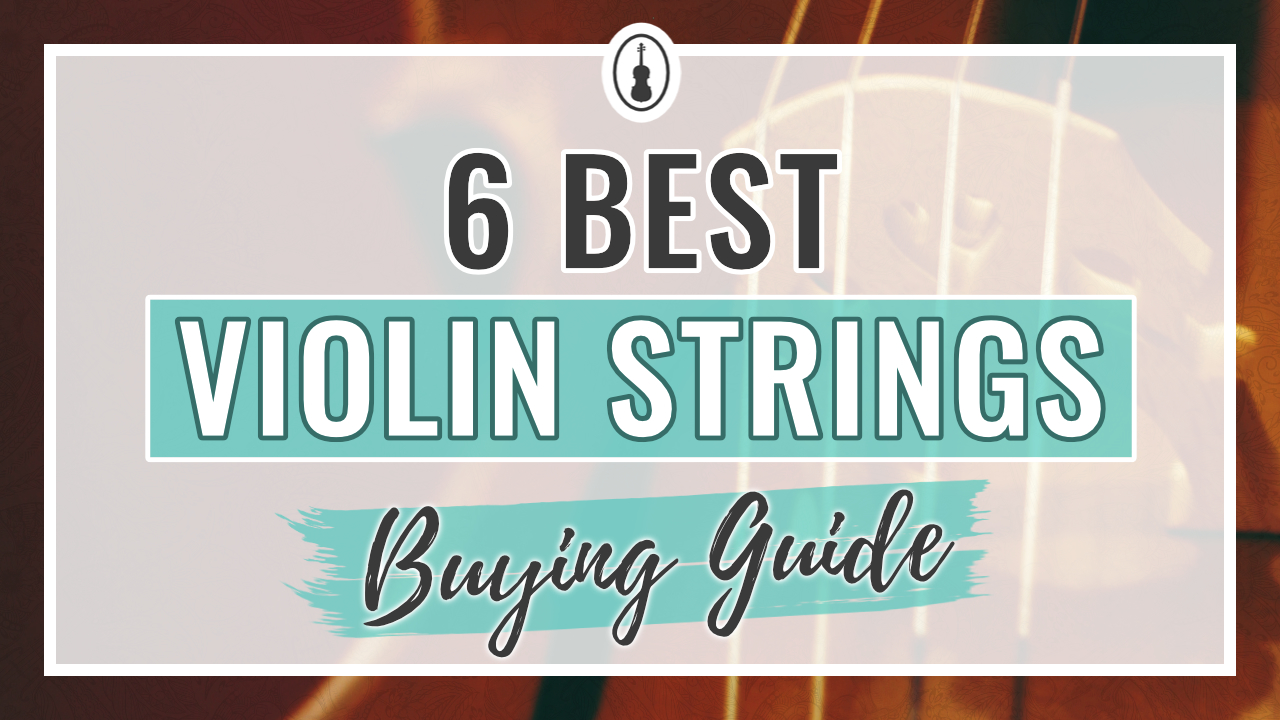
6 Best Violin Strings – Buying Guide
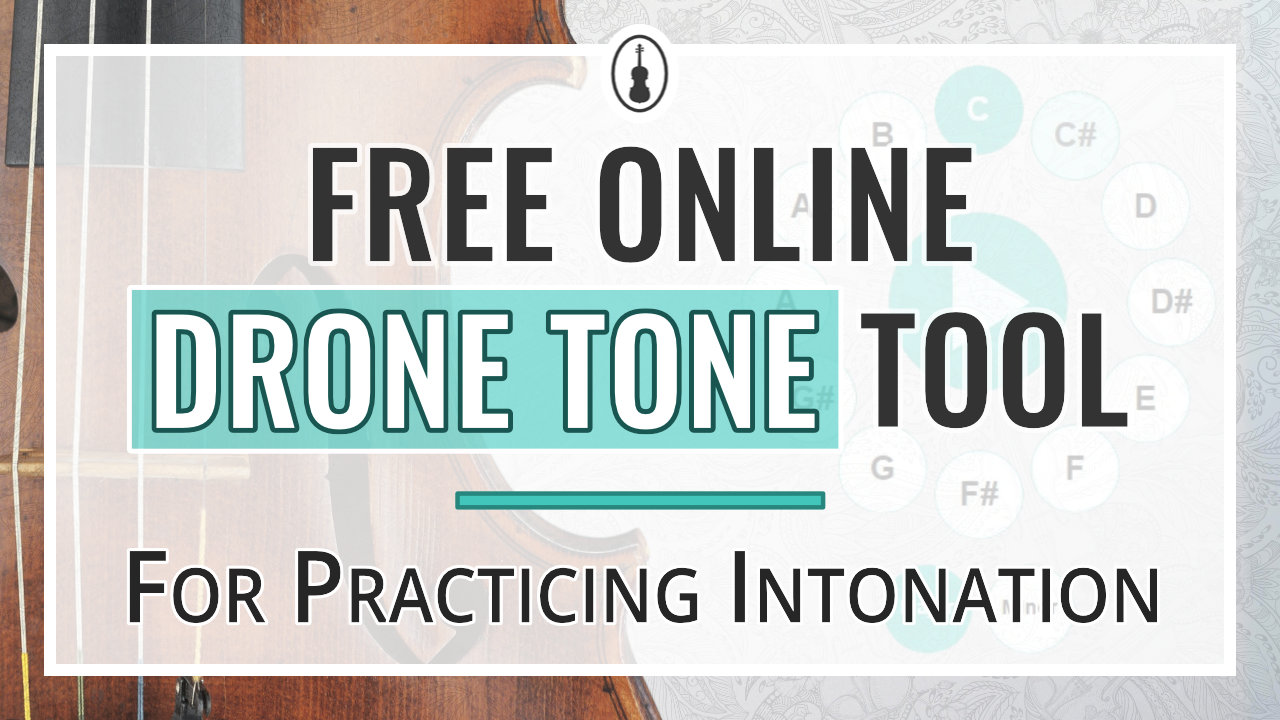
FREE Online Drone Tone Tool | Tuning Practice for Violin
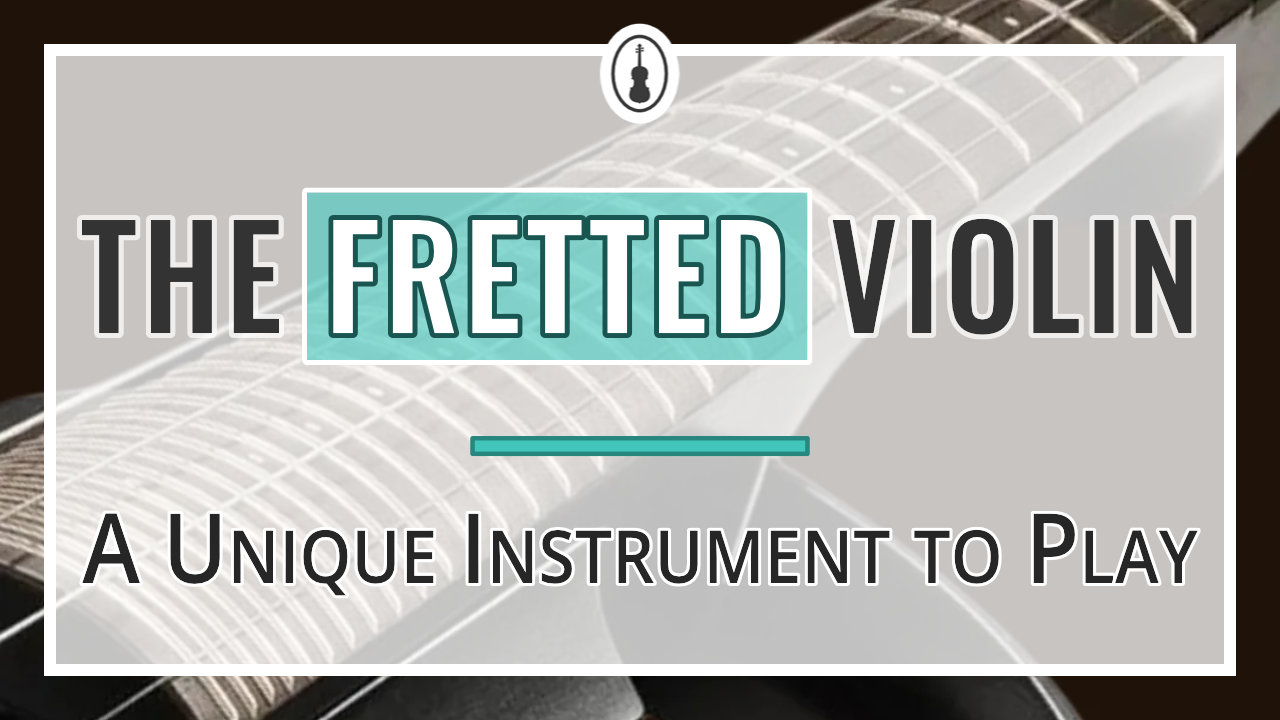
The Fretted Violin: A Unique Instrument to Play!
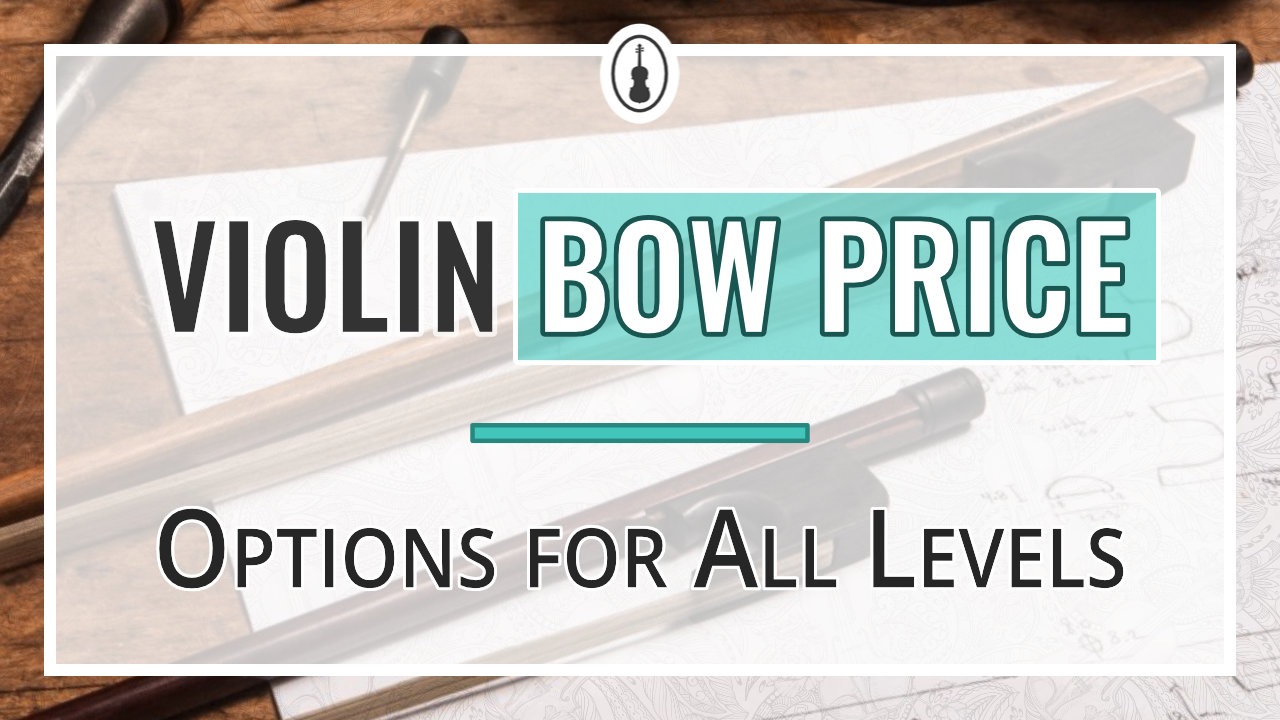
Violin Bow Price: Options for All Levels

25 Best Violin Gifts in 2024 – For Violinists and Teachers

How Many Strings Does a Violin Have? Your Questions Answered
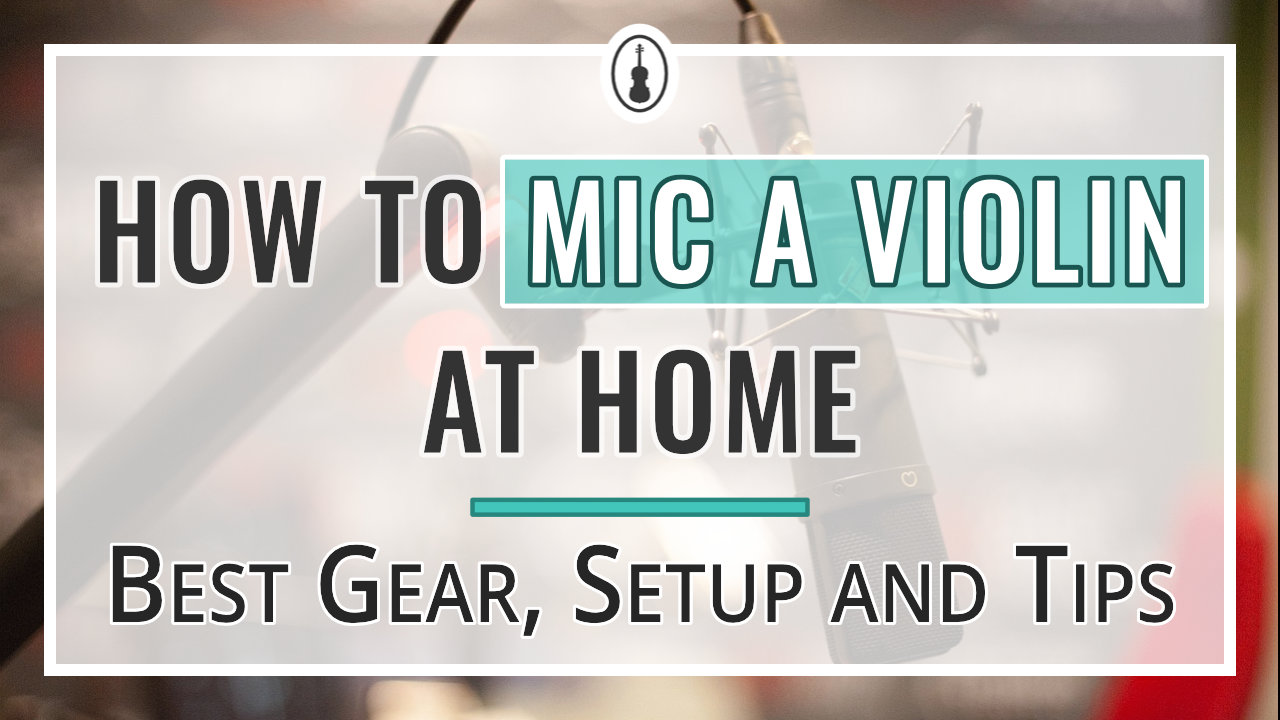
How to Mic a Violin at Home – Best Gear, Setup, and Tips
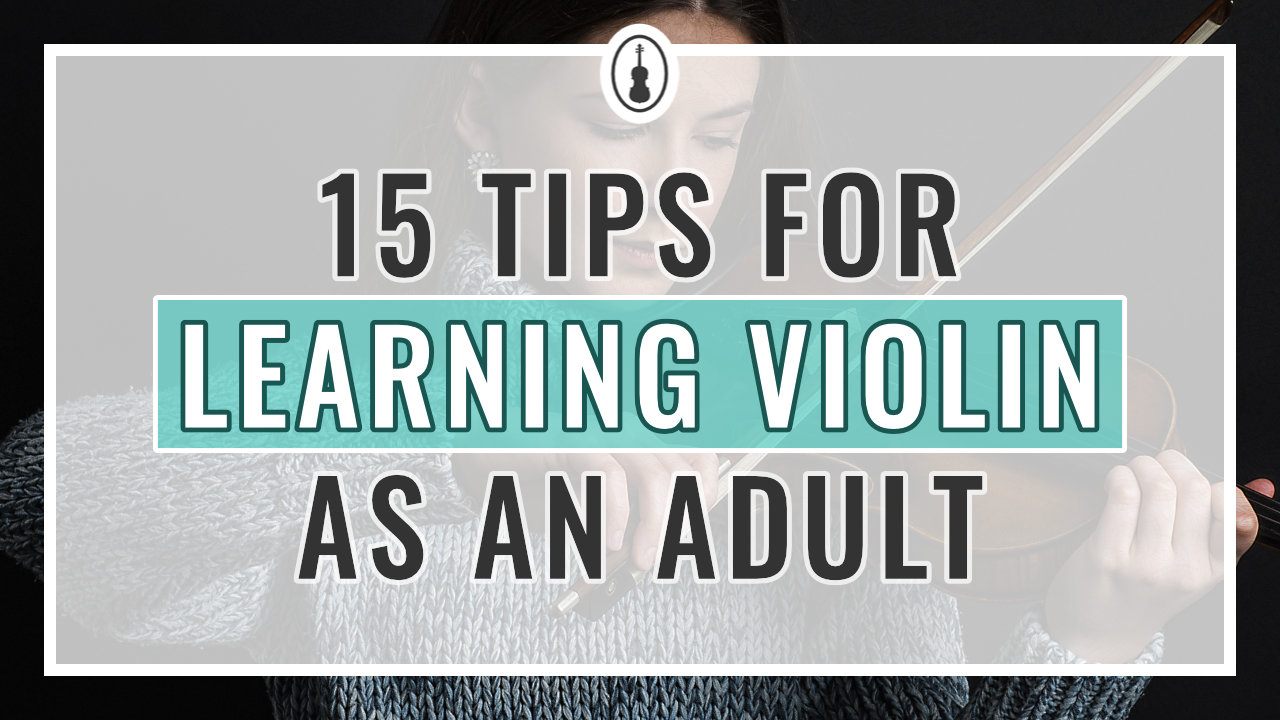
15 Tips for Learning Violin As An Adult in 2024
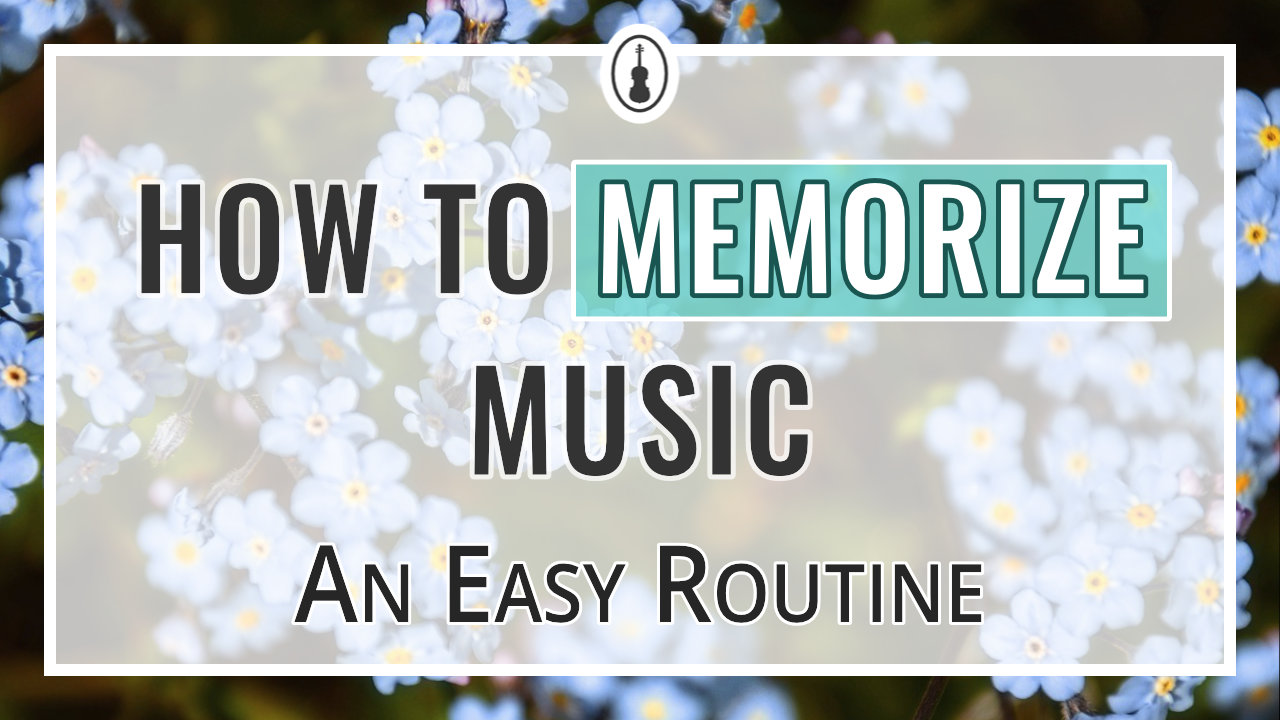
How to Memorize Music: An Easy Routine
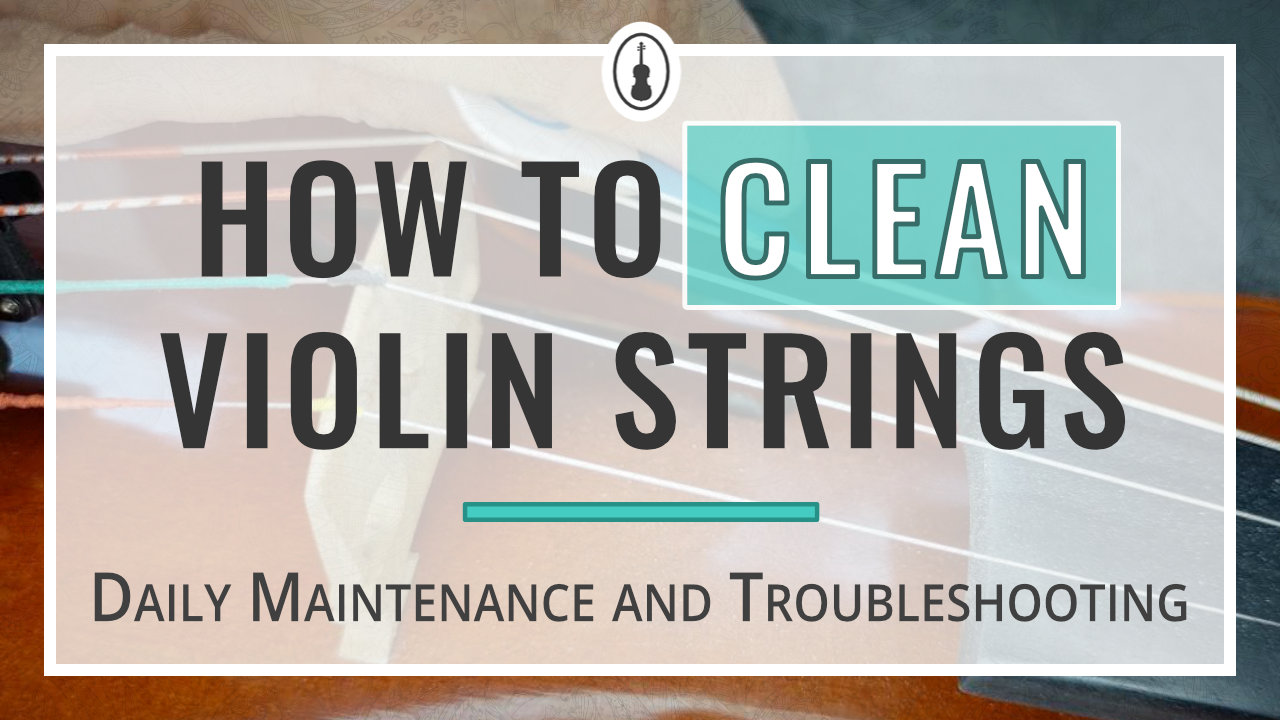
How to Clean Violin Strings: Daily Maintenance and Troubleshooting

The Kodály Method: An Easy Way of Learning Music and Rhythms
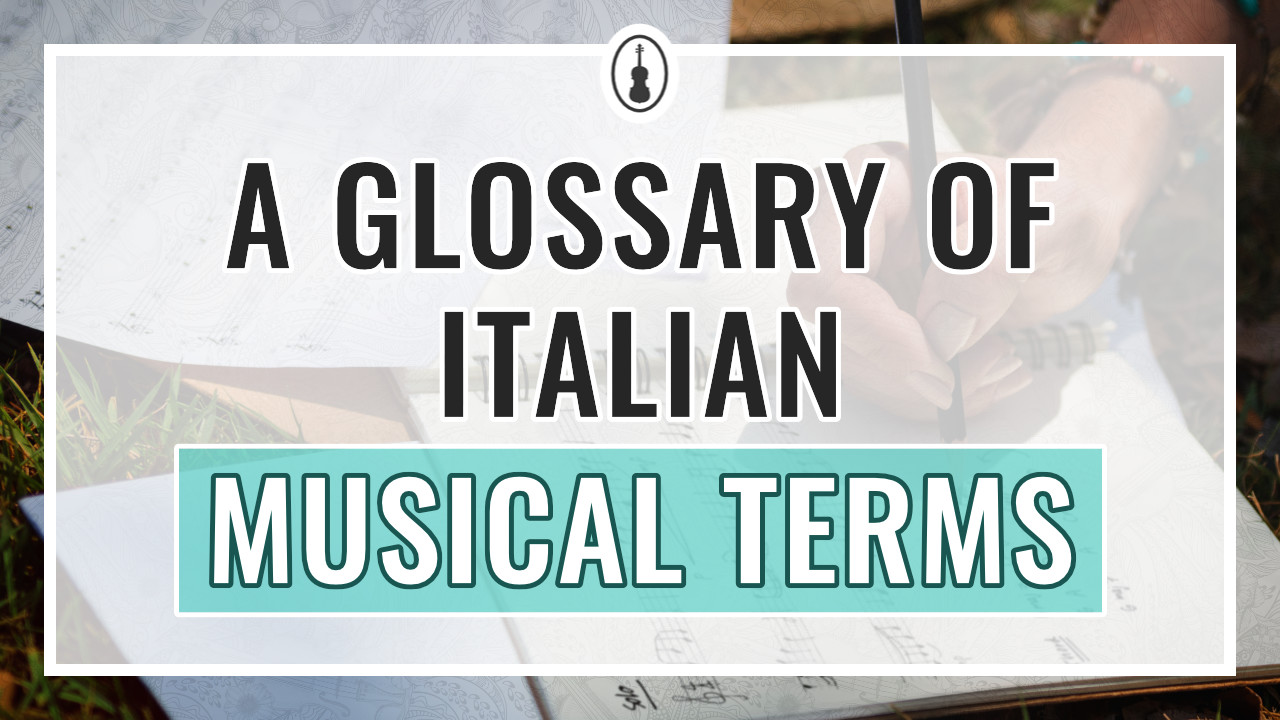
List of Italian Music Words Used in English
- Video Lessons
- How to Read Sheet Music
- Songbook for Beginner Violinists
Contact details
- Full Name *
Describe your request
- Your message *
Verification and sending
- This box is for spam protection - <strong>please leave it blank</strong>:

Travel with your Violin with Great Peace of Mind
It can be a bit nerve-racking to travel with your most prized violin. So many things can go wrong… theft, heat, shocks.
Choose good insurance and a sturdy violin case. Loosen your strings and bow hair. Keep your violin in a climate-controlled room if possible. Monitor hygrometry changes and responds with silica gel desiccant or a Dampit to humidify your violin. Then, practice with a mute and ask for a safe room at the hotel you have chosen wisely.
There are a lot of factors you can manage at home that aren’t always in your control once you hit the road, but fear not– plenty of professionals do this kind of thing regularly and have kept their instruments alive for years, and you can too by taking some simple precautionary steps to keep your violin safe while traveling.
Violin Insurance
Before leaving, if your instrument is expensive, check with your insurance company how well insured you are against theft. If you are not, you should reconsider your insurance policy and purchase another insurance or option for your existing insurance. When I traveled a lot, I had ensured my best violin, but not the other ones, less pricy, that I have. Now that I travel less, I have downgraded my policy. So this is something you can adjust over time. The main thing is that your insurer knows that you travel. Then you should be properly covered in case of a theft.
What case to choose
Make sure your violin case is up for the task before you begin your travel. You’ll want something rugged, well-made, and snug. Case material is dependent on a number of factors specific to your use case, so consider whether you want something rock-solid and heavy or durable and light. Go for something weatherproof or perhaps even air-tight, and try to make room in the budget to buy a case with some quality suspension, a feature that uses some variation of interior material to protect some of your violin’s more sensitive parts from taking the impact from any jostling of the case. It’s really worthwhile to invest in a solid case rather than risk something going loose and wreaking havoc on your violin instead.
If you want to go all out on a hard case, one of the most high-end cases you can get your hands on is a Musafia . Hand-crafted in Cremona, Italy, this brand has been trusted by the most elite performers for ages. They’re thoroughly tested for durability before being sold and come in all sorts of designs that cut no corners, being both incredibly rugged and aesthetically pleasing. They come with just about anything you could ask from a case, as well as some features you probably wouldn’t have even thought to include in a case. The Luxury Classic Dart S3011 is a fine example of this and just one of their many offerings to consider.
If you’re after something affordable and reputable, check out Bobelock [https://www.bobelock.com/cases/violin/violincases.html] violin cases. Their cheaper cases don’t come with a lot of bells and whistles, but the brand does come with a great reputation spanning over a century and countless anecdotes of approval. The Bobelock 1047 in particular is a hefty case that comes with suspension and a built-in hygrometer at a reasonable price on Amazon.
Last thing, when you travel you usually walk a lot between buses, taxies, trains and planes. This instrument case back pack strap is shoulder padded for comfort and is a cheap and clever add-on to your violin case. It helps you carry your violin or viola with less pain and effort in those circumstances.
Loosen your violin’s strings and your bow’s hairs
In order to compensate for any potential warping which may arise throughout your travel, you should loosen the violin’s strings before storing it. Both the wood and the strings are subject to their atmosphere and can expand or contract depending on a number of factors, so to prevent any such variations from causing any complications with your violin (and to make sure your sound-post doesn’t take a trip through the back of your violin), loosen the strings before placing your violin in its case. You should also loosen your bow’s hairs, of course, for the same reason you do whenever you’re not playing.
Never store your violin in your trunk while traveling
Whether you’re on a bus, a train, or driving your own car, you do not want to take a chance on leaving your violin in a volatile place like a trunk. If you travel with your violin stored out of sight, you’re throwing its temperature control out the window and instead subjecting it to what’s more often than not an unregulated atmosphere. On a hot day, it gets the worst heat in the whole vehicle. On a cold day, it gets the worst cold. It could be dry back there, or it could be humid– it’s not up to you. Even if the trunk happens to have a good atmosphere for storing a violin (don’t count on it), you’re not even sure it’s going to be there if you don’t secure it well, as it’s at a much higher risk of being stolen than if you were to just hang onto it yourself. Keep it nearby and treat it with the care it requires at any other location.
For the same reasons, don’t leave your violin unattended in your car. You don’t know who might come by uninvited, and you do not want to leave it exposed to the elements. Cars heat up and cool down very, very quickly– don’t take the risk.
My old teacher used to compare his violin to a child that you would never leave in the car alone but bring with you, or leave on the floor instead of comfortably installed on a chair!
Keep your violin in climate-controlled rooms at all costs
As stated before, when you travel with a violin, it’s subject to whatever atmosphere you’re in. It’s important to prepare your violin for weather variations during your travel, but what would be even better is to avoid atmospheric complications in the first place. Obviously, you’re not in charge of whether it’s dry or humid outside, but optimally, you do have a say in how the weather feels inside. By all means, do what you can to maintain a healthy environment where you’re staying to keep your violin in good shape.
The stability of the environment is crucial, as the violin can adapt to a certain temperature or hygrometry, put changing all the time these factors are another story.
Now, depending on the part of the world you travel to, the air can be too dry or too humid. Remember that those old Italian luthiers didn’t design string instruments with around-the-world tours in mind! But there are a couple of ways to preserve your instrument integrity and playability without too much effort.
Defend your violin against hygrometry variations
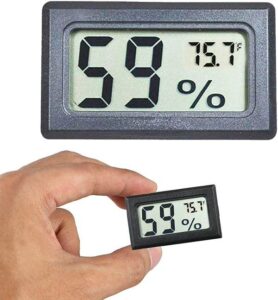
The violin is a natural instrument: it is made out of wood. And wood expands with humidity and retracts when the air becomes dry. This can have many consequences on the setup of the instrument, the tension of the strings on the bridge. The sound can be affected, and even cracks can happen to the body of the instrument. In eastern countries, the extremely humid atmosphere can cause the glue to melt and the body and the ribs and back to open slightly!
So the first thing you need if you travel far or in different climates is a small hygrometer to carry in your violin case if it didn’t come with one. This one has a really small form factor and is cheap on Amazon. It fits easily in a violin case.
Fight humidity in your violin case with dehumidifiers
If you’re going somewhere where it’s humid, take along a dehumidifier. There’s a number of products out there that can be used to reduce your instrument’s humidity if necessary. The simpler I’ve found to use is for example these silica gel packets , which have a good desiccant action and are easy to fit in my case. Be careful about this, though, as you can easily damage your instrument if you overcompensate for the excess moisture and wind up instead of drying the instrument out. In order to ensure your instrument maintains an optimal moisture level, use a hygrometer to monitor said moisture level in your violin.
Fight dry air with humidifiers
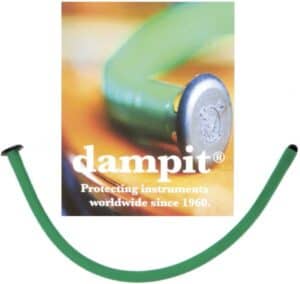
On the other hand, if you’re expecting it to be dry where you’re going, get yourself a humidifying product, such as the well-known Dampit . A Dampit does what you would expect: it gradually releases moisture into your instrument to avoid any humidity problems. Just let your Dampit in a glass of water before inserting it into your violin. Be sure to remove the excess water, of course, by carefully wiping it with a dry towel.
Just as you should be careful not to overdo it with the dehumidifier, be sure not to over-humidify it either. Again, your best bet is to use a hygrometer to keep an eye on your violin’s humidity levels and have the necessary materials on hand to counteract them as needed.
Practicing your violin in a hotel
While traveling with a violin, naturally you’re going to want to practice, but your fellow hotel guests might not be as eager about the notion as you are. In the interest of being considerate towards the other guests, make sure to bring a mute with you, and maybe even consider some other routes to further dampen the volume of your instrument.
If you have an electric violin, you can play without too much noise, as I have detailed in this post . But if you need to practice with your acoustic instrument, then you need to choose the heaviest mute such as a brass mute. I am pretty happy with this one on Amazon , not too expensive considering how practical it is.
It’s probably a good idea to save your playing for daylight hours as well. If it ends up being a problem, the worst-case scenario is someone from the front desk asks you to stop, so don’t be afraid to practice while you’re staying at a hotel.
Hotel safety for your pricy violin
Yes, you need to be considerate of your violin even when it comes to choosing your hotel. Every problem previously mentioned can be a risk in a hotel room if not considered ahead of time. If you can help it, choose a hotel located someplace safe. To mitigate any risk of theft, try to get a room on the higher levels of the hotel. If you’re concerned about improper care or bad intentions from hotel staff, opt to decline housekeeping service during your stay. Depending on the environment, it may also help to keep your violin relatively close to the room’s AC unit for temperature and humidity regulation as needed. As usual, take appropriate measures to monitor these factors and adjust them accordingly.
If you can travel with a cheap instrument or a cheap electric instrument, then things will be easier in all respects. But if you need to bring your pricy acoustic violin, then be extra careful. Ask if the hotel has a big safe in which you could store your instrument. Or if the manager has a safe room for valuables. You might be offered a way to be reassured with special consideration.
Basically, do whatever you can to monitor your violin’s condition when you travel just as you do when you’re at home. Plan your journey ahead of time to avoid any subpar conditions for your violin, and make sure you have the materials on hand to keep it in good shape should any issue arise. Other than that, hit the road, and get ready to ace your next performance.
I have been playing the violin since the age of 6. I have studied, like many, classical music at a conservatory. At the same time, I discovered Miles and Coltrane, BB King and Clapton... So I decided to learn how to improvise, how to free my playing, and how to incorporate these new elements in my music. This new Violin Trend, this is what I want to share with all of you!
Similar Posts
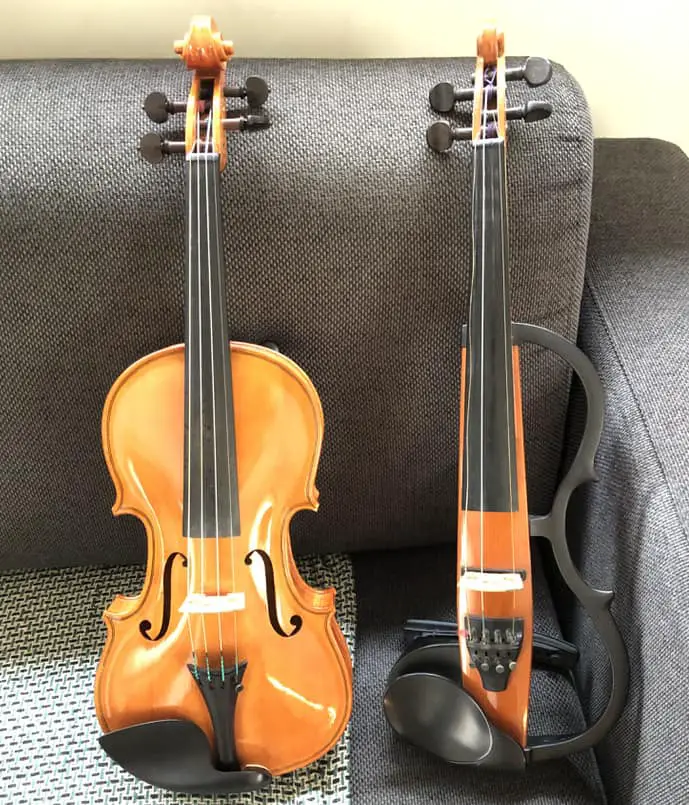
Electric Violin vs Acoustic: a Comparison with Pictures
It doesn’t come directly to mind to buy an electric violin the first time we think about starting. The romantic aspect of violin playing usually involves an acoustic instrument, a Stradivarius.But electric violins are not just for rock stars and not everybody can live in a big house without neighbors and practice at night. So…

Are Electric Violins Quiet, or perhaps even Silent? (With a dB Chart)
As lovely as the violin sounds, its volume has been the detriment to many players’ confidence, and even consideration, of picking the instrument up for a long time. It’s no wonder that electric violins have become so popular over the years considering that fact. Still, can an electric violin completely eradicate that problem? Electric violins…
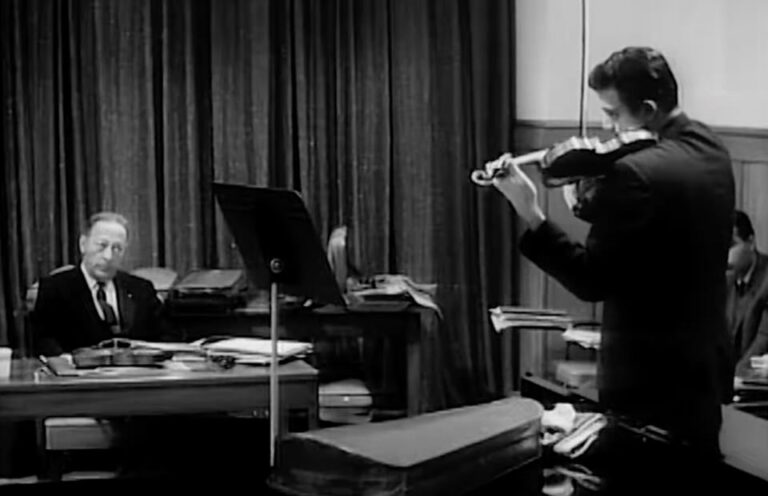
How Often Should I Practice the Violin? Daily vs weekly routine
Playing the violin implies two things: the first is to get always better, and the other is to never get out of shape. The former implies playing as much as possible, the latter not going below a bare minimum. I have explained how long should we play the violin every day in this blog post….
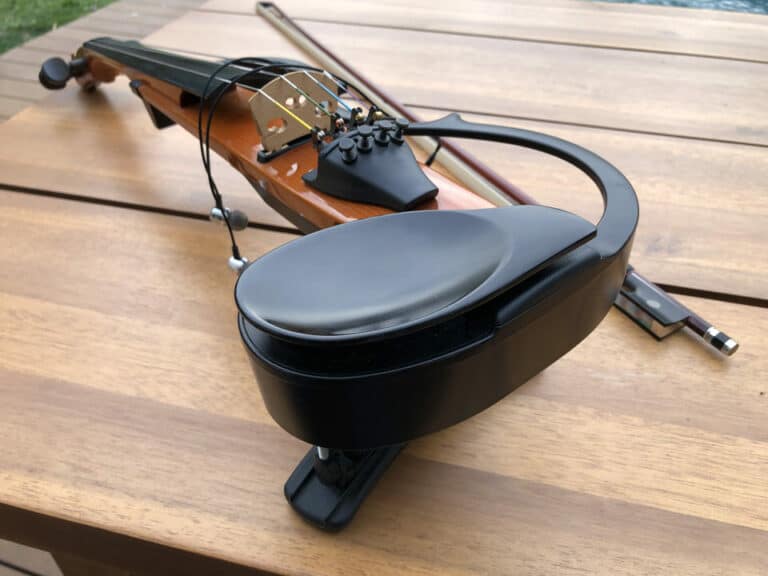
A Complete Test of Yamaha Silent Violins: the SV-100 Series and YSV104
It is the violin where it all started: the Yamaha Silent Violin SV-100. I was there at Lavillette Music Show in Paris back in 1997 when it launched and bought it straight away. So it is the first iteration of this great SV series (SV stands for Silent Violin, of course).Later, Yamaha enhanced and improved…
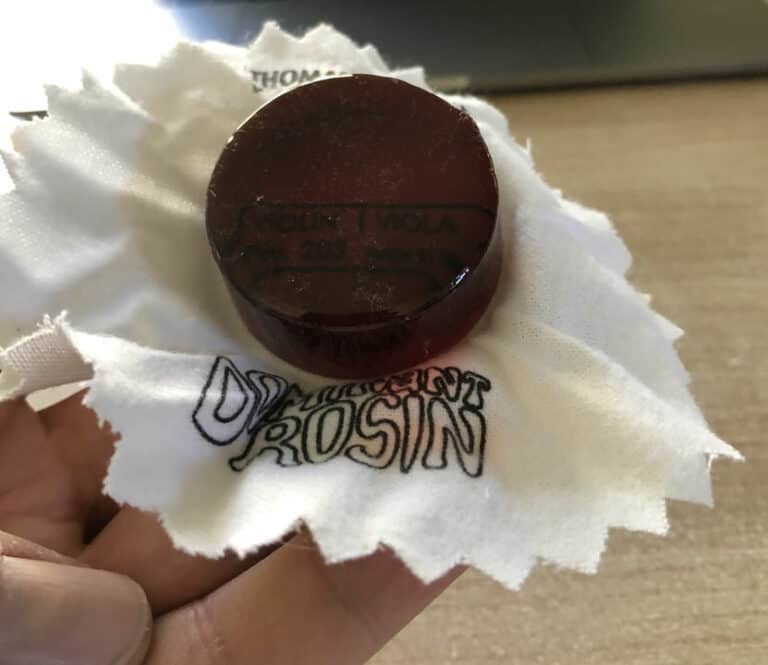
What is Violin Rosin and How to Choose it
Rosin is also known as colophony and is used by string players to coat their bow hair. The resulting white powder grips the string and makes it vibrate and then sing. Without rosin, a bow wouldn’t make any sound at all. It would only slide silently over the string. This is how rosin is important…
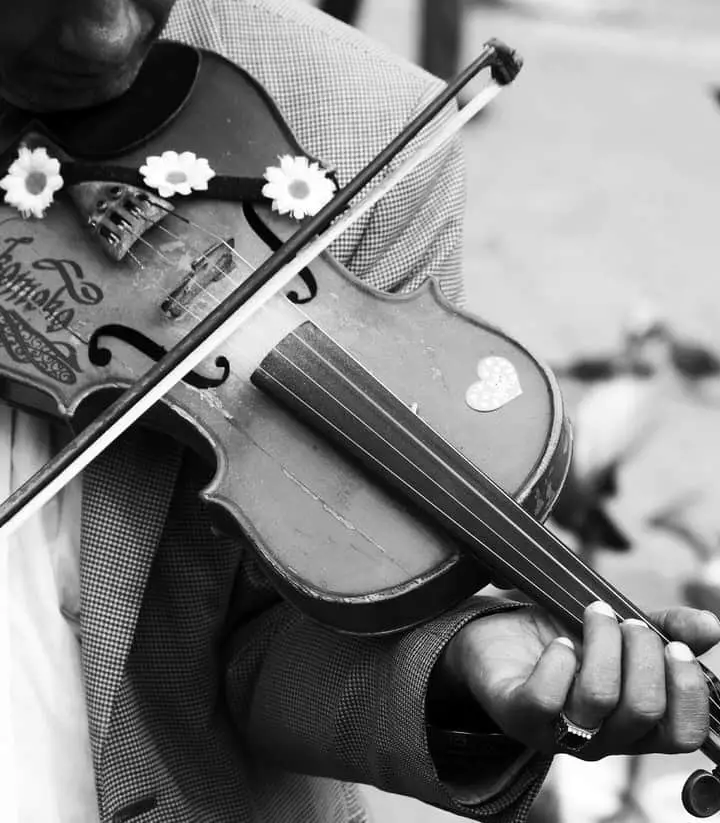
What’s the Difference between a Violin and a Fiddle?
The main difference is about twenty years of training and no one minds if you spill beer on a fiddle. Kidding aside, though, the two instruments are actually the same thing despite how radically different their musical associations are. Surely there’s some kind of difference for there to be such a distinction though, right? Well,…
- The Company
- News and Media
- Our Partners
- Why We Love

- For Travel Agents
- For Choirs and Orchestras
- Religious Tours
- Tours and Trips
- Concert Management
- Festival Marketing
Group Programme Modules
Music Packages
- Warning : Undefined array key "music-packages-modules" in /var/www/html/wp-content/themes/violintravel/inc/helpers/header-functions.php on line 215 Warning : Trying to access array offset on value of type null in /var/www/html/wp-content/themes/violintravel/inc/helpers/header-functions.php on line 215 https://violintravel.com/en/">Music Packages
Sightseeing Tours Budapest
- Special Services
Trips and Packages

Violin Travel

Classical music heritage daily walking tours for groups and individuals

Our Group Programme Modules
To grant your most specific requests we provide tailor made programs in our professional field. Rehearsal visits, private miniconcerts, interactive workshops, behind the scenes programs at the leading cultural venues in Budapest.

Our Music Packages
Our three or four day festival packages include accommodation, transfers, 'Category 1' concert tickets, gourmet dining and thematic sightseeing tours of the city.

Our Concerts
This site uses cookies. By accepting cookies you can optimise your browsing experience.
Virtuoso Channel
Top culture news from top sources. Constantly updated.
- Arts & Culture
- Entertainment
- Classical Music
- Opera & Ballet
- Architecture
- Photography
Rodion Petrov: Vivaldi The Four Seasons, Moscow City Symphony
Related articles
Previous story.
- Share full article
Advertisement
Supported by
Critic’s Pick
Review: Thomas Adès Meets the Profound Beauty of Schubert
The Danish String Quartet returned to Carnegie Hall with its Doppelgänger project, pairing Schubert’s String Quintet and a premiere by Adès.

By Joshua Barone
Franz Schubert and Thomas Adès are two composers whose works are capable of touching the cosmos — in different centuries, and often in different ways.
The beauty of Schubert tends to be quiet and shatteringly calm, his postcards from the beyond written in lyrical melodies sometimes underlined with nothing more than a chord. Adès, particularly in the past decade, seems to have flung open the gates of heaven, unleashing forces that overwhelm and awe in their immensity.
Yet each has also done the opposite: Schubert, in his aptly nicknamed “Great” Symphony, with its Beethovenian heft, for example, and Adès in his hypnotic and weightless “ Paradiso ” section of “Dante.” At Zankel Hall on Thursday , the composers met somewhere in the middle as they were paired for the fourth and final installment in the Danish String Quartet’s Doppelgänger project.
One of the great pleasures of recent seasons, Doppelgänger has surveyed Schubert’s late quartets while commissioning new works that respond to them. Thursday brought perhaps the composer’s finest chamber work, the String Quintet in C; Asbjorn Norgaard, the Danes’ violist, joked from the stage, “We are the Danish String Quartet, with a Finnish cellist,” gesturing to their guest, Johannes Rostamo.
In previous Doppelgänger programs at Zankel, Lotta Wennakoski’s “ Pige ” homed in on the maiden of “Death and the Maiden,” and Anna Thorvaldsdottir’s “ Rituals ” played with the repetitive nature of the “Rosamunde” Quartet. (Because of pandemic delays, the project will actually return next season , with Part I.) Each evening has ended with an arrangement of a Schubert song; on Thursday it was “Die Nebensonnen,” from “Winterreise.”
Adès himself behaves like something of a Doppelgänger. A master of the uncanny, he has arranged existing works and written homages to the likes of Couperin and Liszt in a slippery blend of reverence and surrealism. Here, in “Wreath for Franz Schubert,” he takes a single phrase from the second movement of the Quintet and riffs on it nearly beyond recognition, as in “ Darknesse Visible ,” his piano treatment of the John Dowland song “In Darkness Let Me Dwell.”
“Wreath” looks, and sounds, much simpler than it is. The players pluck or bow a two-note, upward phrase that continuously changes in its harmony and volume; each measure is different, transforming like the broken chords of Bach’s famous Prelude in C and settling into a meditative flow.
Once that happens, it can be easy to lose your sense of time. And that is baked into the score: “Wreath” runs “15-25 minutes” because neither its rhythms nor note durations are to be played as they appear. Adès writes “sempre molto rubato” in the first measure, a direction to maintain a constantly fluid tempo.
This is where the piece gets incredibly difficult, but also magical. The players are both independent and interdependent; if the violins are a central reference point, then the viola and cellos can be roughly within one measure of them in either direction. Their individual freedom requires constant attention to the greater ensemble, in a tricky balance of forward motion and patience. Often soft, ending on an extreme and mostly symbolic “pianississississimo,” the music takes on a perfumed haze.
It is gorgeous, more the Adès of “Paradiso” than the grandly rollicking “ Inferno .” And although it is inspired by the second movement of the Schubert, it is a fitting companion to the entire work, which even at its showiest is never far from profound beauty. The Quintet, as Norgaard said onstage, is “more than just a piece.” Like much of late Schubert, it seems to contain more than the heart can handle at once: mystery, grief, ferocity, joy, terror. Above all, grace.
All that was present on Thursday. The Danes — Norgaard on viola, Frederik Oland and Rune Tonsgaard Sorensen on violin, Fredrik Schoyen Sjoin on cello — are among the most skilled and intelligent interpreters of late Schubert and Beethoven, affecting but not overly emotional, organic and sometimes shockingly daring, but unified in their vision.
With Rostamo, the first movement’s opening chords had a reediness that gave way to lyricism with an underlying wildness that emerged, as the music developed, in swerving cello dissonances that felt as if they threatened to pummel the delicacy of the violins. The second movement unfurled as a lonely outpouring of ember intensity that, with a sudden blow, burst aflame. Specialists in folk music, the Danes brought a rustic bliss to the Scherzo and mercurial finale, in a juxtaposition of celebration and reflection, like the first party after the darkest days of the pandemic.
It can be difficult to talk about the Quintet without resorting to hyperbole. This is the kind of piece that you would take to a desert island, that you return to throughout your life and maybe even want to hear at the end. Not for nothing did Norgaard describe it as “legendary for a reason.” So it feels appropriate to say that Thursday’s excellent performance of it had the power to make you grateful for the very existence of music.
Danish String Quartet
Performed on Thursday at Carnegie Hall, Manhattan.
Joshua Barone is the assistant classical music and dance editor on the Culture Desk and a contributing classical music critic. More about Joshua Barone
Let Us Help You Love Classical Music Even More
Spend 5 minutes digging a little deeper into the best parts of music..
Take five minutes to discover the varied, explosive, resonant sounds of percussion instruments , whether struck, shaken, pounded or scratched.
Listen to the sweeping musical statements at the foundation of the orchestral repertory: symphonies .
Learn to love choral music — ancient, contemporary, gospel, opera, sacred, romantic — with selections from our favorite artists.
Looking for specific musicians? Check out Maria Callas , opera’s defining diva; the genre-spanning genius of Mozart ; and 21st-century composers like Caroline Shaw and Thomas Adès.
That’s just the beginning: Here are five minutes to fall in love with tenors, the flute, the trumpet, Brahms, string quartets and so much more.

IMAGES
VIDEO
COMMENTS
The "Infiddel". WipLstix is a very handy travel violin I invented in 1999. There are now over 850 of them floating around the galaxy, and they are still made solely by me in my shop in the southern Appalachians. The length between its bridge and nut is that of a standard 4/4 violin, but the body has been minimized to maximize portability.
Prepare your string instrument for air travel. The first step to a smooth travel experience starts with your violin or viola. Choose a hard, sturdy, and weatherproof violin case. When it comes to flying with a violin or viola, you're going to want to make sure your case is up to the task. Not just any old case will do.
Before packing your violin for travel, you will need to take a few precautions to make sure it is ready for the journey. The first thing you need to do is loosen the strings. This will help to prevent them from becoming too tight during transit and will help to keep the instrument in good condition. Finally, you should wrap your violin in a ...
Hard cases are like safety capsule that protects your violin while you are traveling. 7. Bring extra set of violin strings. Travelling on a plane is tricky. It poses real risks to your strings. Even if you followed all the safety tips in flying with your violin, strings still break.
You'll need to remove and replace each string separately. Step 1: Slightly lower the pitch of each string using the following order: A, E, D, and G. Step 2: Remove and replace the G string first, and bring it almost up to pitch. Step 3: Remove and replace the remaining strings in the following order: E, D, and A.
A good set of synthetic core violin strings, like Fiddlerman Strings, starts at $ 30 for a complete set. Professional level violin strings, like Pirastro Evah Pirazzi, start at $ 90 for a set. Gut core violin strings, like Pirastro Eudoxa, start around $ 100.
Place the end of the new violin string into the tailpiece of the violin and the opposite end of the string into the violin's tuning peg. Wind the head of the new violin string around the string's tuning peg. Repeat the above steps for each of the strings that you need to replace. Tune your violin using a tuner.
Keeping your violin safe. Flying internationally with your violin may require some extra care and consideration to ensure the safety of your instrument, including some time taken to prepare before you ever arrive at the airport. In the face of these restrictions, people in the industry worry that international musicians may be disincentivized ...
Loosen your violin strings and bow hairs. Loosen your violin strings and bow hairs to avoid breakage. At flying altitude-even in a pressurized cabin-the tension in your violin strings can increase and damage the instrument's body. This travel tip applies when traveling with any stringed instrument, not just a violin! Buy a humidifier ...
Buying Your Violin Strings: Violin shops sell strings as convenience to their customers, and will even change your strings for you if you ask. But shop prices are often as high as 100% above mail-order prices. This is, in part, because string inventory maintenance is time-consuming and expensive for instrument dealers and luthiers. The cheapest ...
This completely new instrument has a full-size playable string length of 12.75 inches. The cool thing about the International Travel Violin is that it has a body length of approximately 13 inches (normal 4/4 violin has a 14" body) and a cleverly shortened "scroll-less" pegbox. The result is a full-size instrument with a total length of only 20"! This allows the use of a case that is a ...
We are making and shipping the Trinity Sets to violinists all over the world (over 600 sets so far). You are very welcome to order from String King. You can choose the set, separate cases and any accessory from the list using the Order Form. You will see the total price, including possible VAT tax (if you live in the European Union) and a ...
Pyle Premium Solid Wood Full Size Violin Kit, 4/4 Violin Starter Package with Travel Case & Bow, Extra Strings, Digital Tuner, Shoulder Rest & Cleaning Cloth for Students, Kids, Adults dummy Fesley Violin 4/4 Full Set, Flame Maple Solid Wood Fiddle Violins with Hard Case, Full Size Violin Kit with Bow, Rosin, Shoulder Rest, Tuner, Extra Strings ...
String King, founded in 1999, has grown to provide an excellent global mail-order and advice service. Gabriel Bania, a baroque violinist with long practical stringing experience took over the company in 2006. ... The Trinity Violin Travel Set is the last and the most important of our inventions. String King is owned by Gabriel Bania through the ...
The Essential Guide to Finding the Best Violin String + Reviews. The D'Addario Ascenté would be on your ascent list. The extra high tonal range aids you in fine-tuning the performance. The synthetic core system truly aids in attaining consistent sound accuracy. Thomastik is next on the list of recommendations.
Never place your instrument in the trunk. Keep it in the cab. Loosen the strings on your string instrument and the bow hairs to help prevent expansion and contraction damage. Carry your instrument in a hard case. Bring your string instrument inside restaurants and hotels, if the car's air/heat will be off for more than 30 minutes.
What Are Violin Open Strings? The violin open strings are the four strings mounted on a violin. From left to right, the violin string order is: G, D, A, E. The G string is thickest, and E is the thinnest string. The term "open" means that no fingers are pressed down on the fingerboard. We play just the string itself.
It can be a bit nerve-racking to travel with your most prized violin. So many things can go wrong… theft, heat, shocks. Choose good insurance and a sturdy violin case. Loosen your strings and bow hair. Keep your violin in a climate-controlled room if possible. Monitor hygrometry changes and responds with silica gel desiccant or a Dampit to ...
Caulfield Grammar School Chamber Strings & Caulfield Grammar School Kreisler Strings; Complete Organ Works by J. S. Bach - 14 concerts in the Reformed Church, Hold Street; ... Violin Travel Ltd. [email protected] +36 1 797 3535. Hillside Offices, 1123 Budapest, Alkotás utca 55-61, B. ép. 2. emelet .
Born in Moscow, Russia (1978) in the musical family. At the age of 5 began his violin lessons and at the age of 7 appeared as a soloist with Moscow Radio Symphony Orchestra conducted by V. Fedoseev in one of the best Moscow concert halls. Studied in the music school of Queen Sofia in Madrid (1999-2001). Currently studies in Tchaikovsky Moscow ...
We work with students, schools and professionals from installing strings and rehairs to the most complex restoration projects! Learn More. Contact Us Today! (844) 443-6159 · [email protected] Are you looking to rent, buy, or get your instrument repaired? Or are you looking to schedule lessons or a delivery?
Welcome to the official YouTube channel of the Moscow City Symphony - Russian Philharmonic! https://orchestra.ru
Walking tour around Moscow-City.Thanks for watching!MY GEAR THAT I USEMinimalist Handheld SetupiPhone 11 128GB https://amzn.to/3zfqbboMic for Street https://...
Danish String Quartet Performed on Thursday at Carnegie Hall, Manhattan. Joshua Barone is the assistant classical music and dance editor on the Culture Desk and a contributing classical music critic.